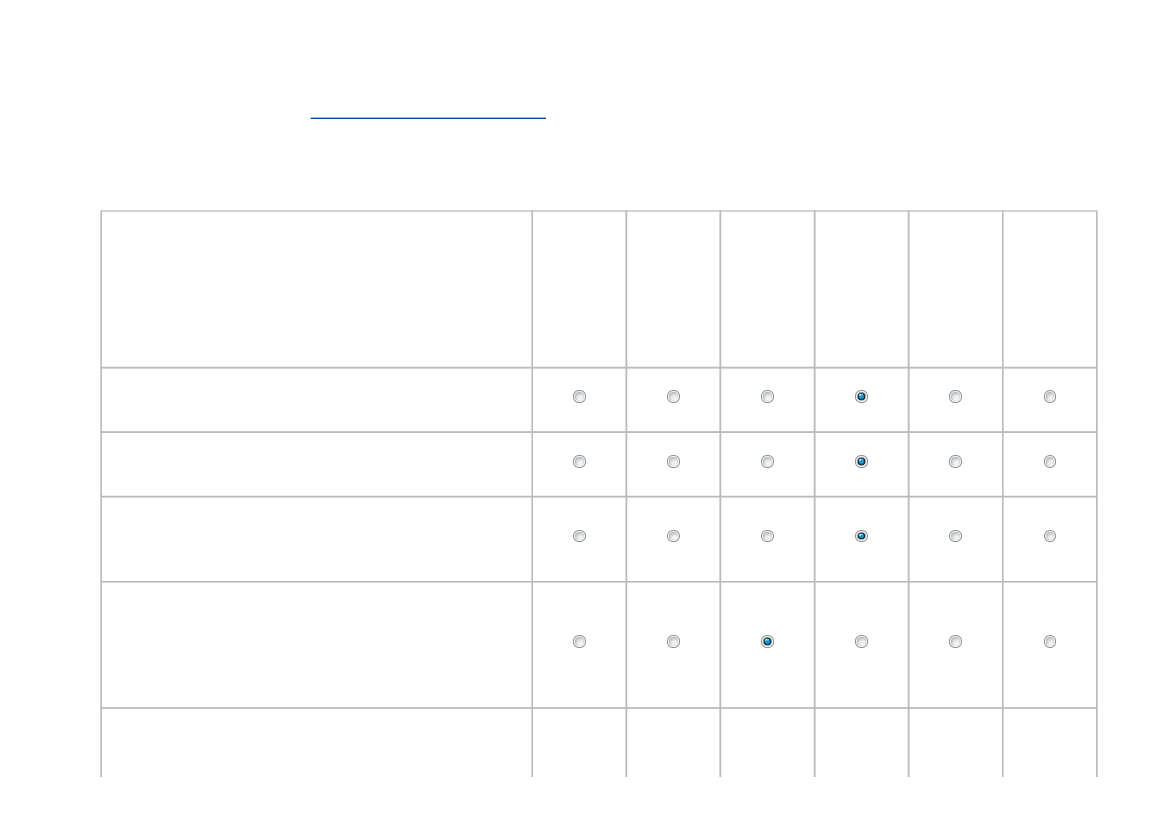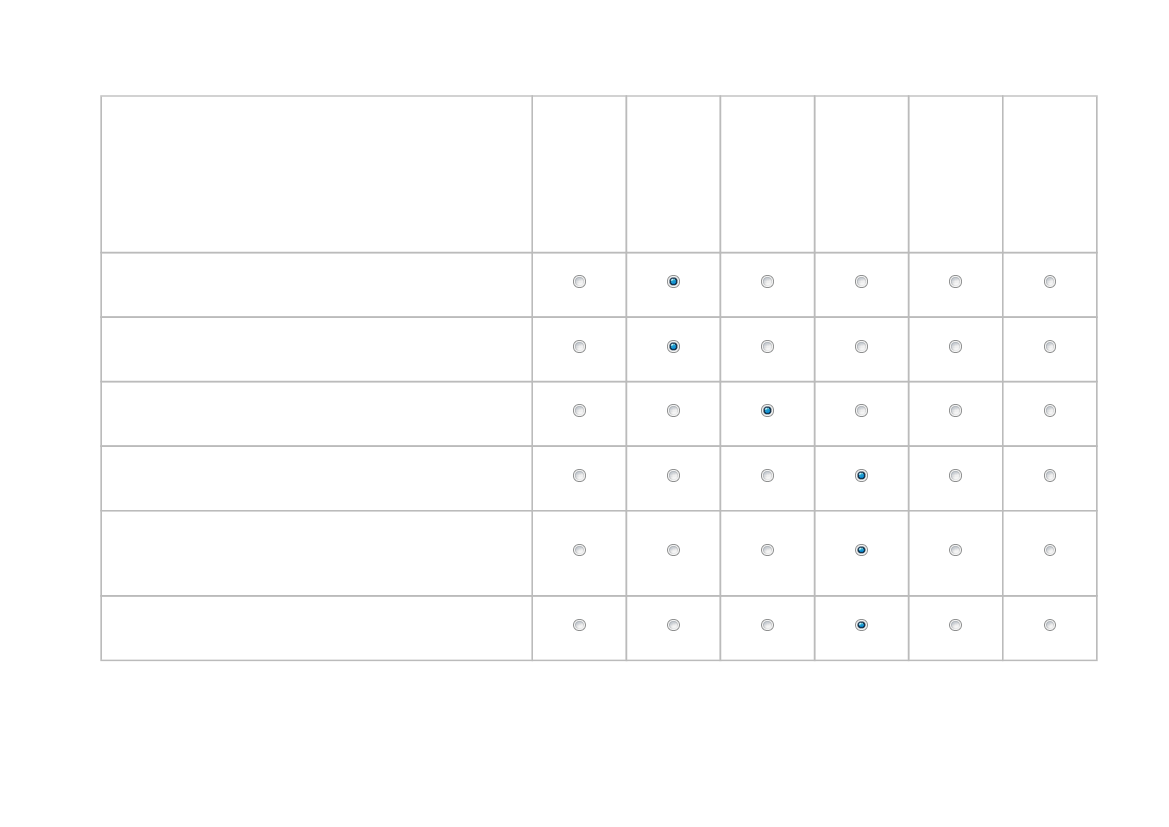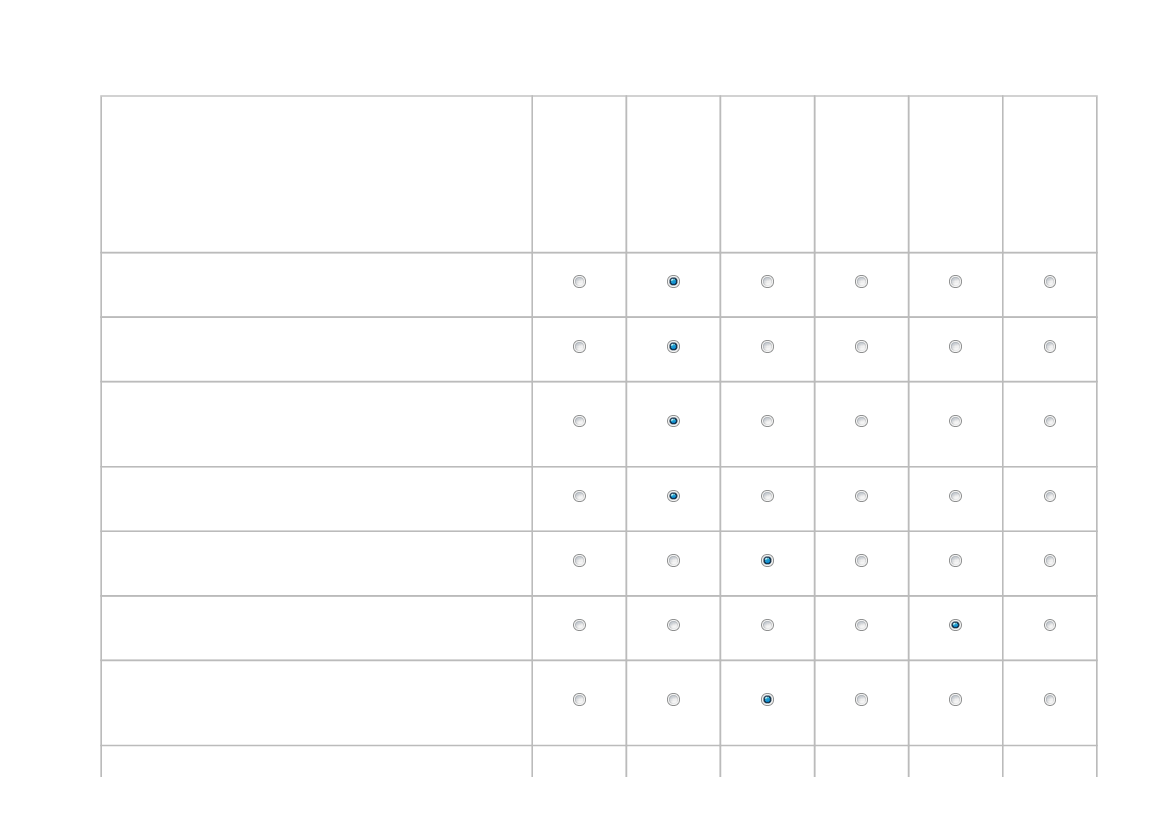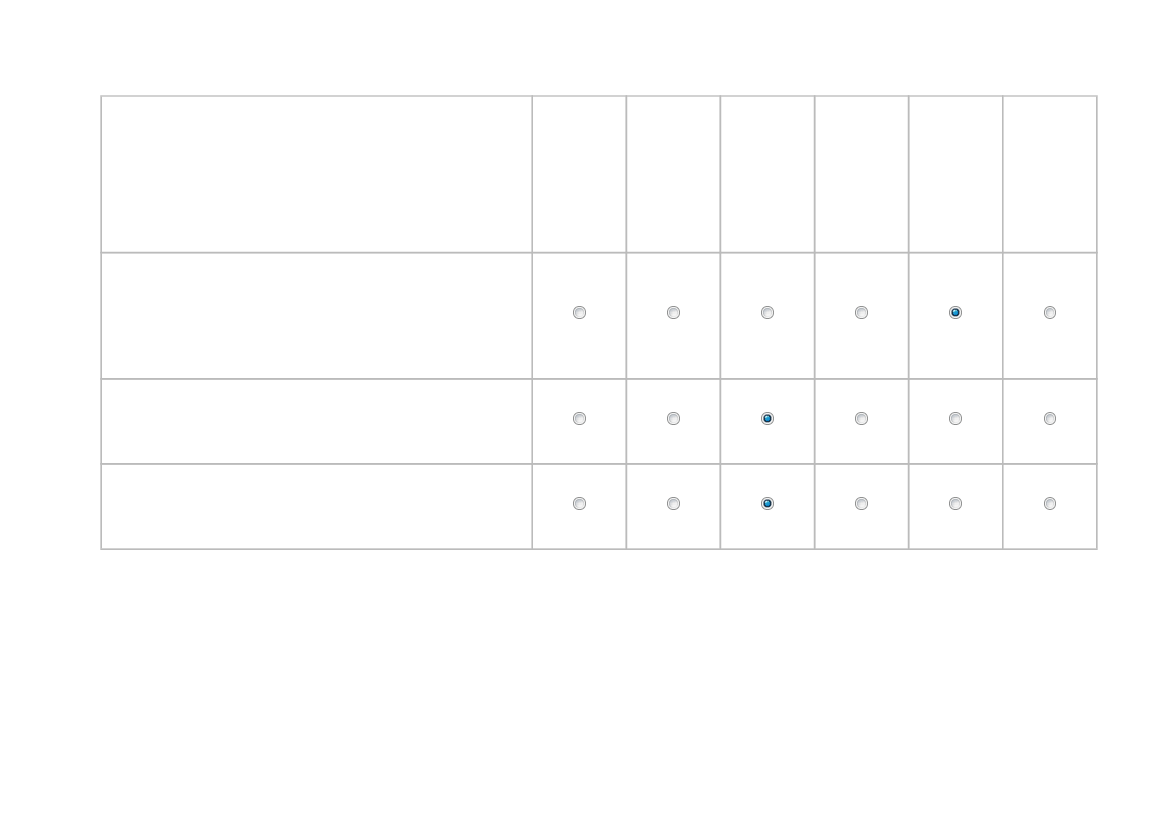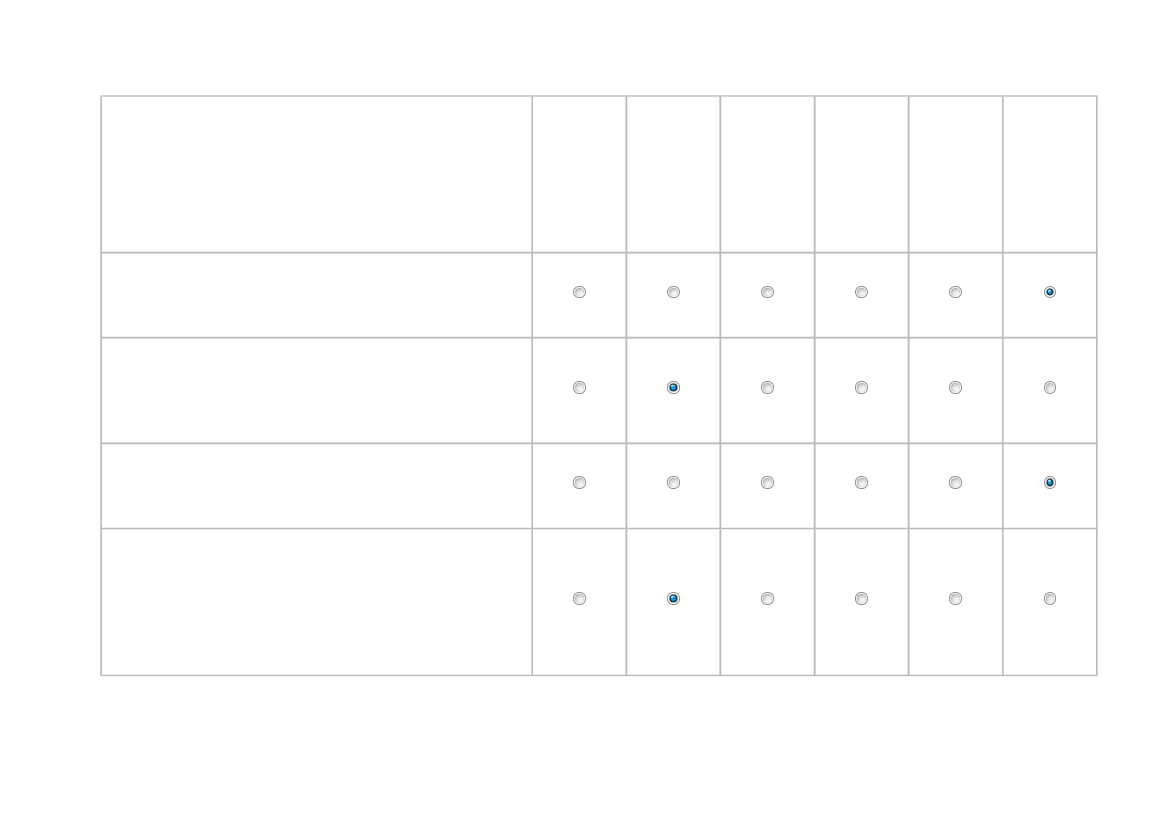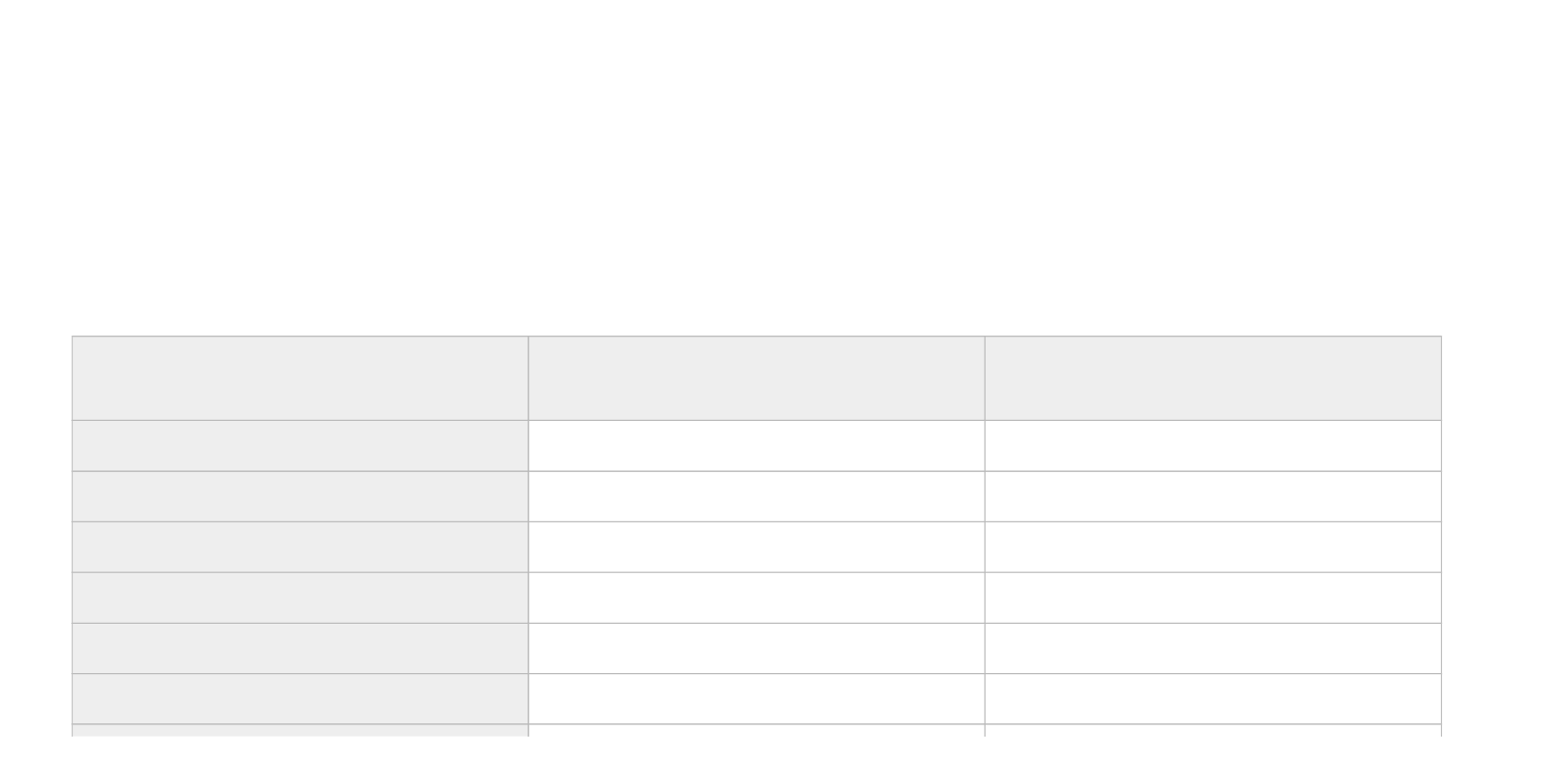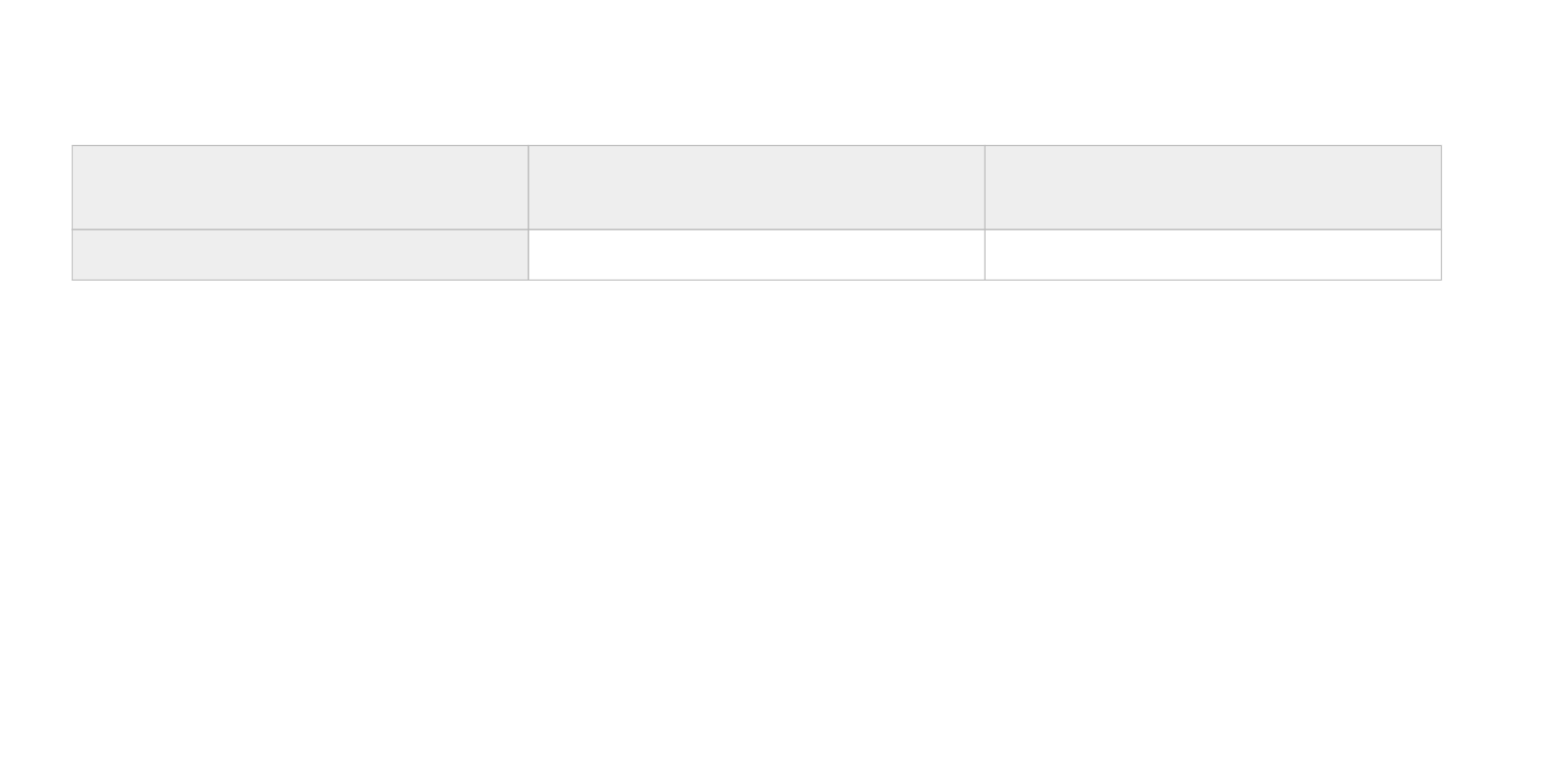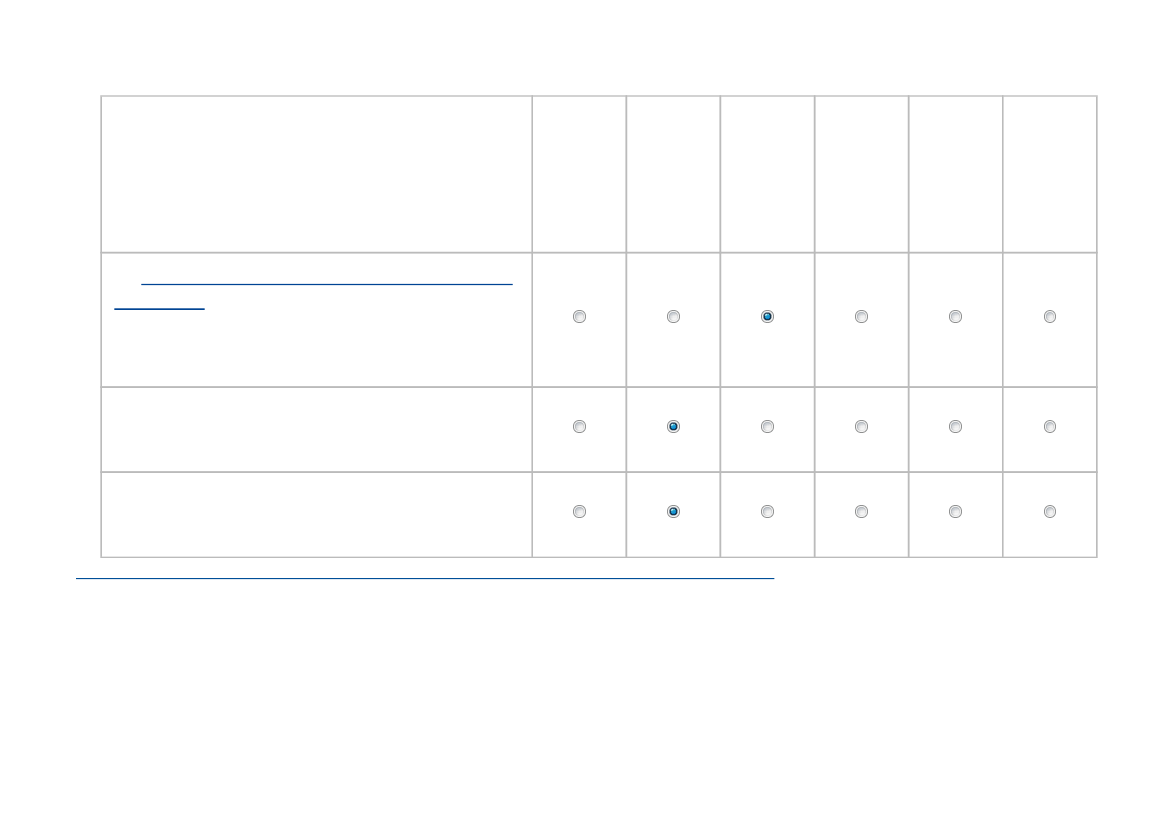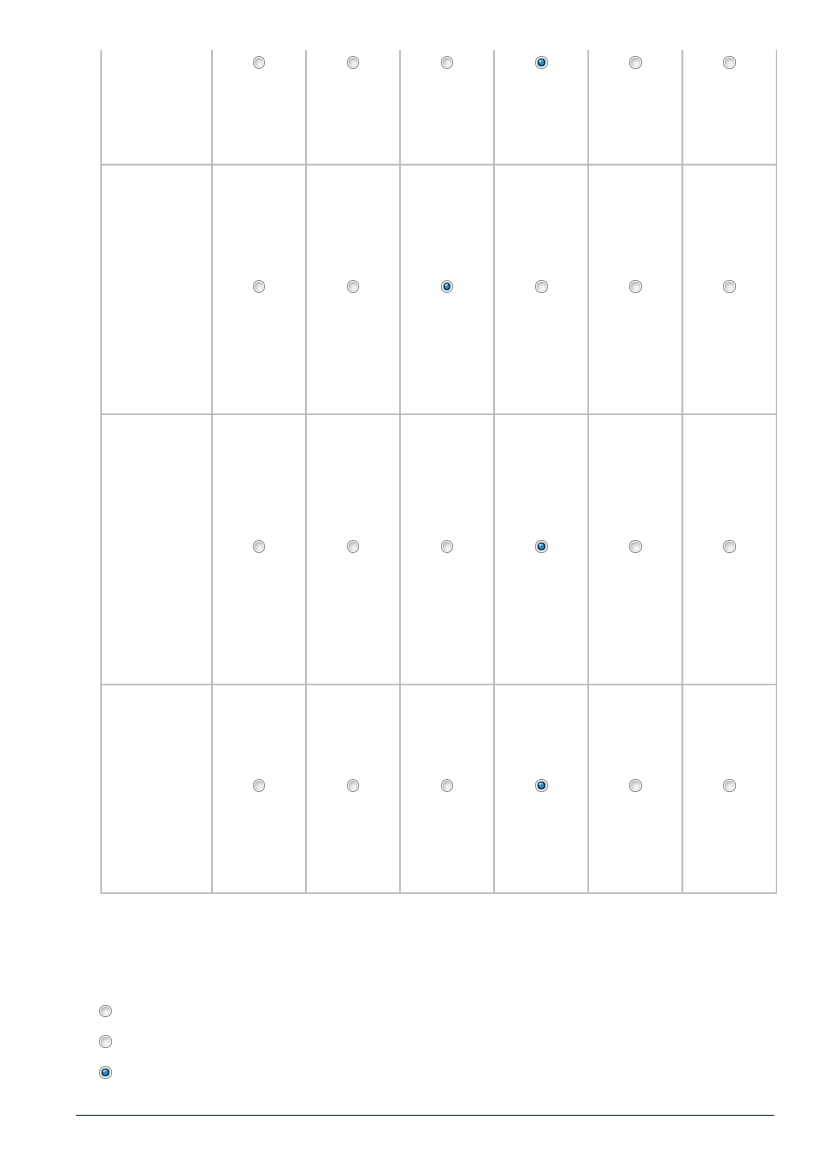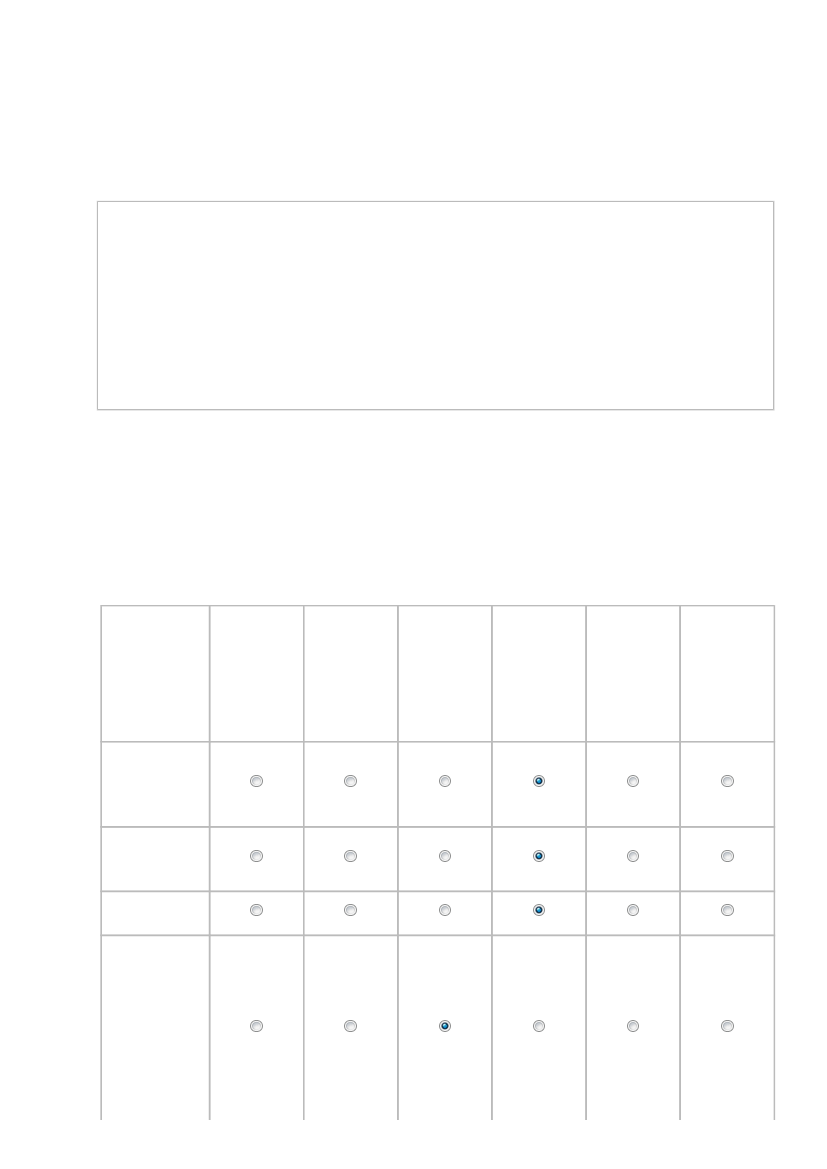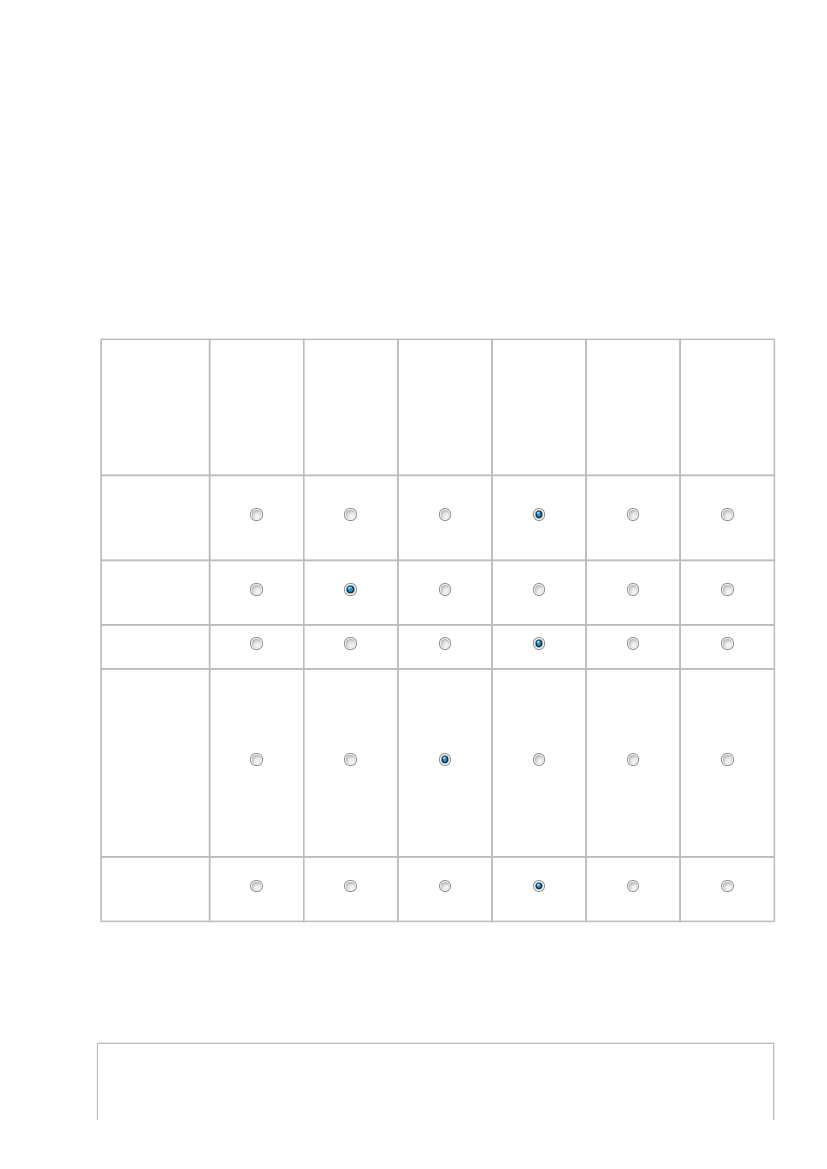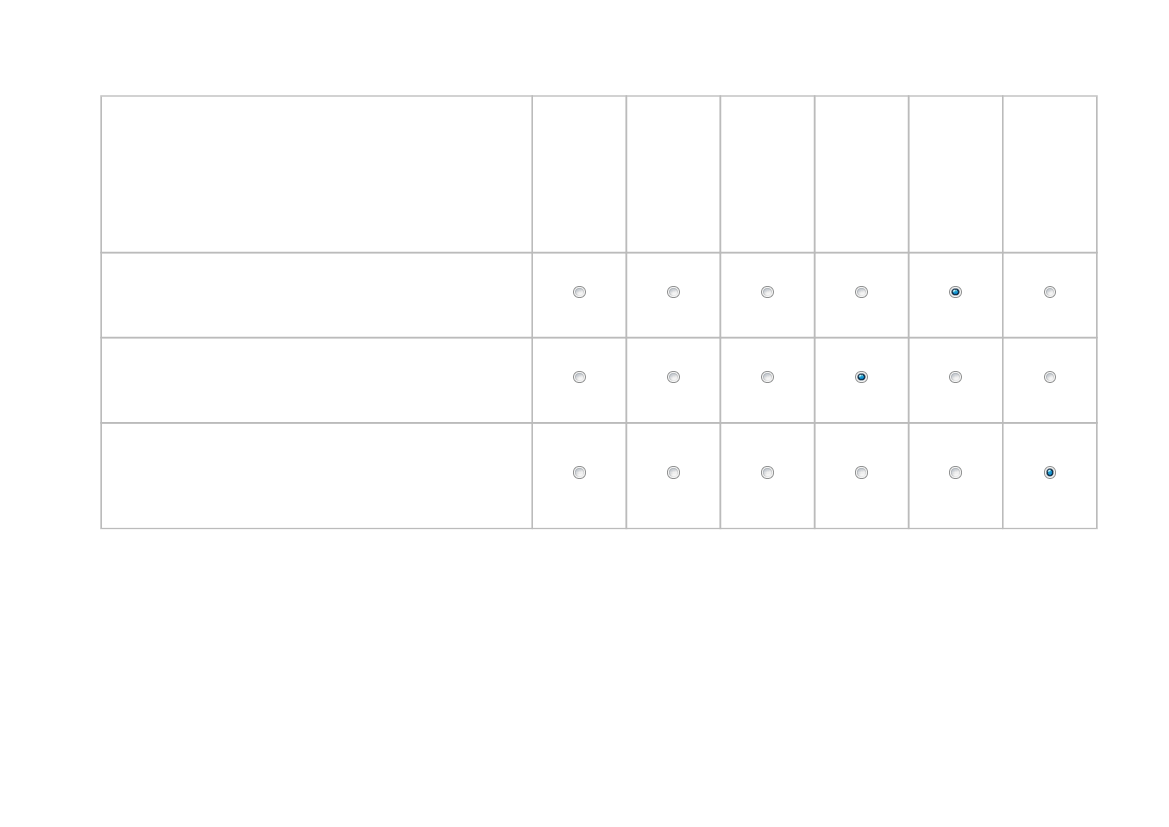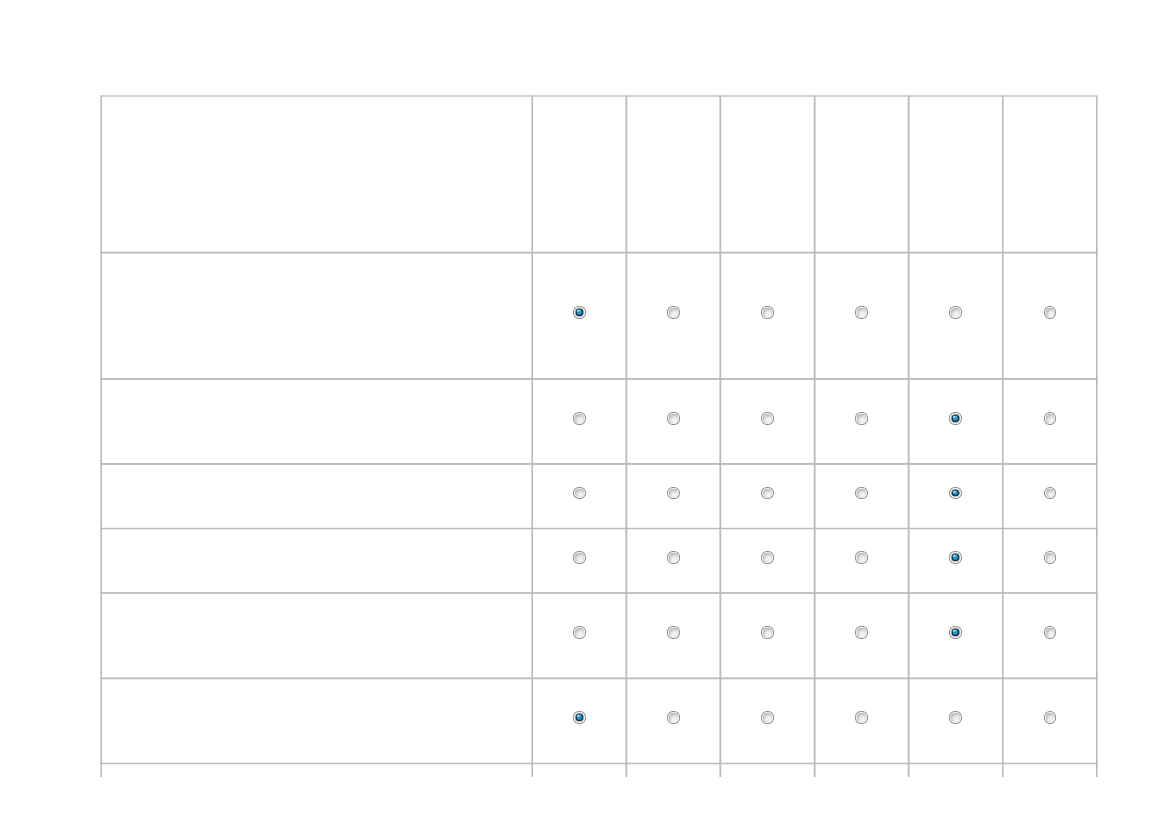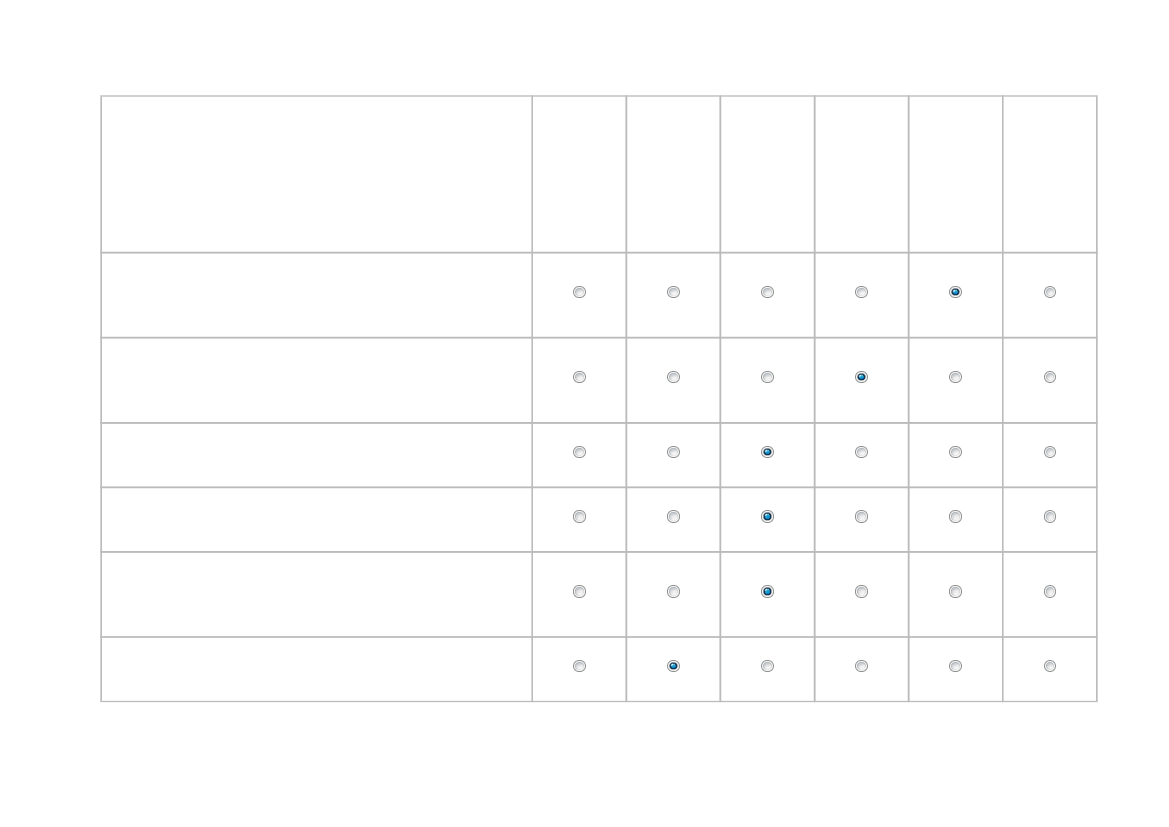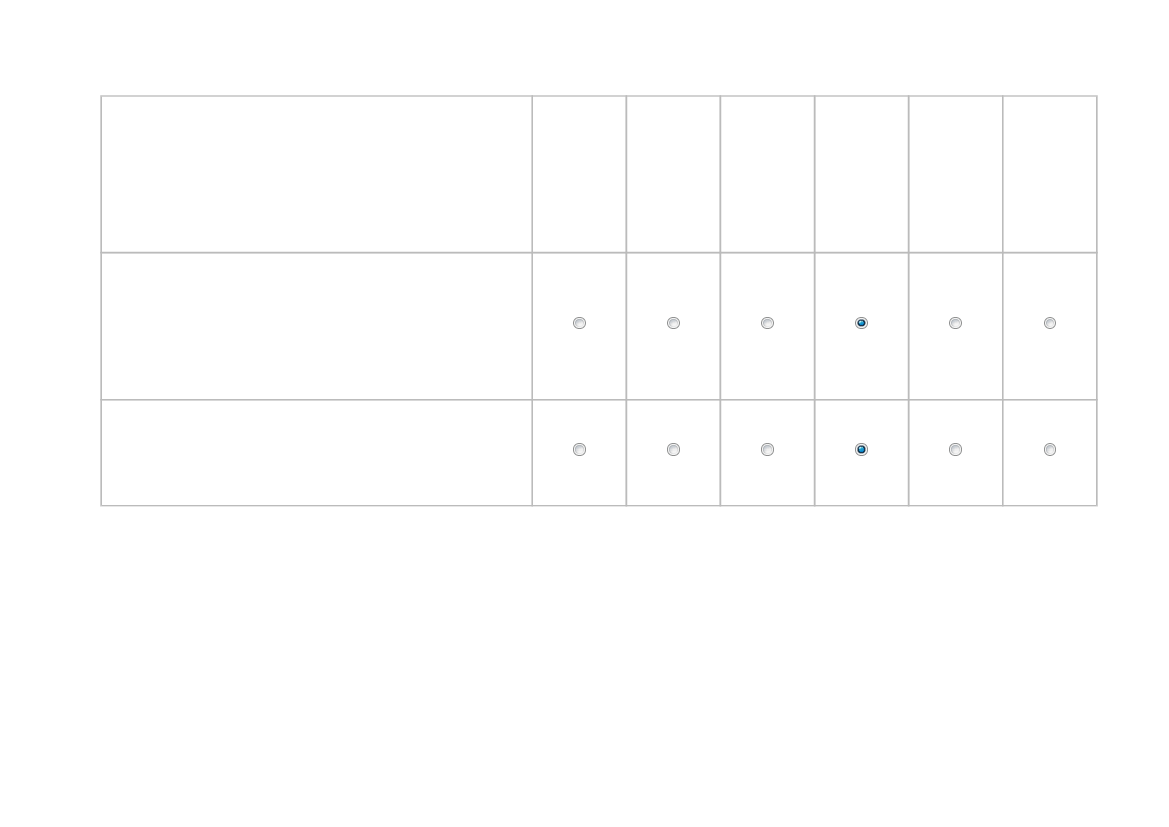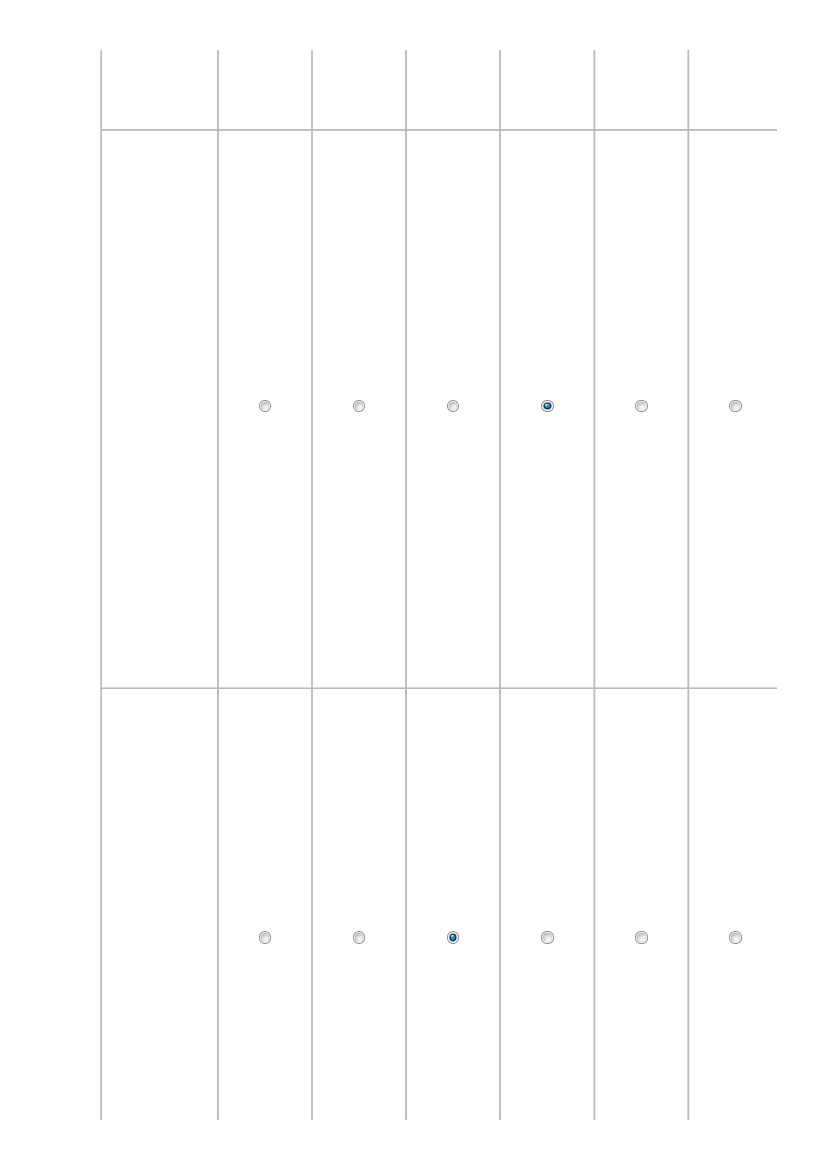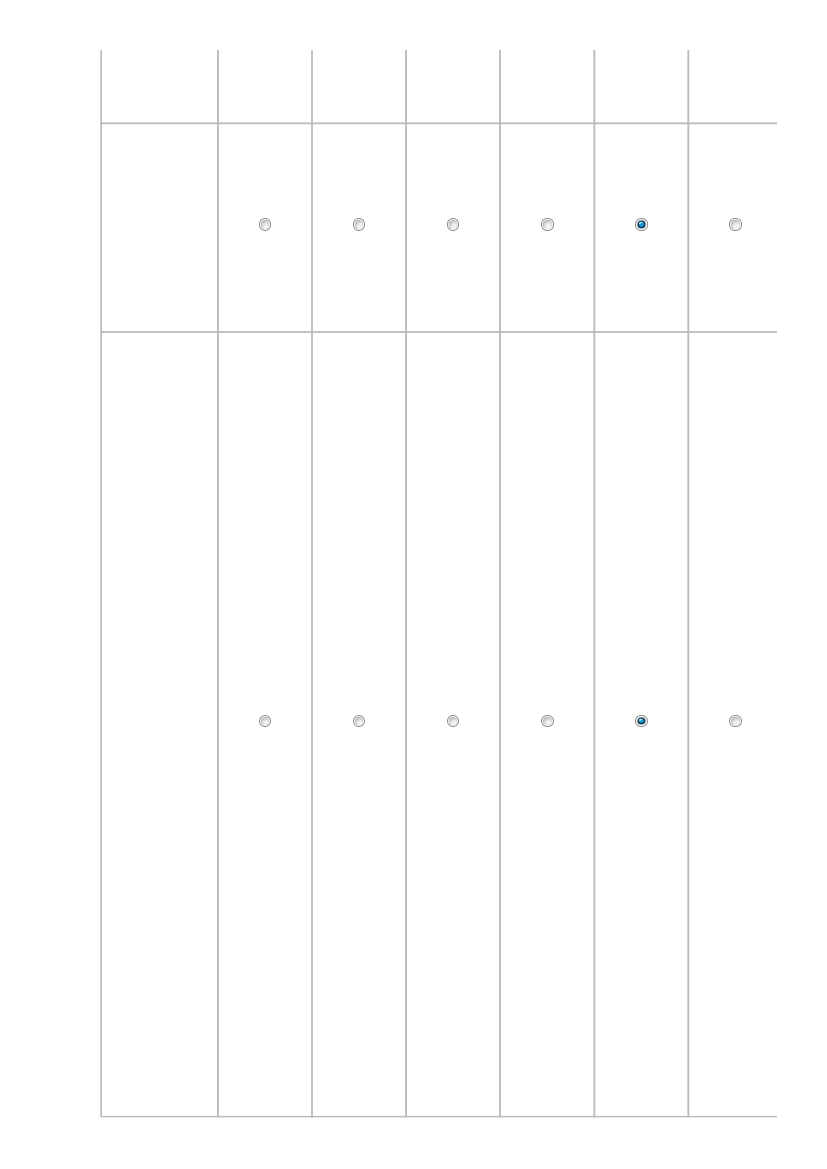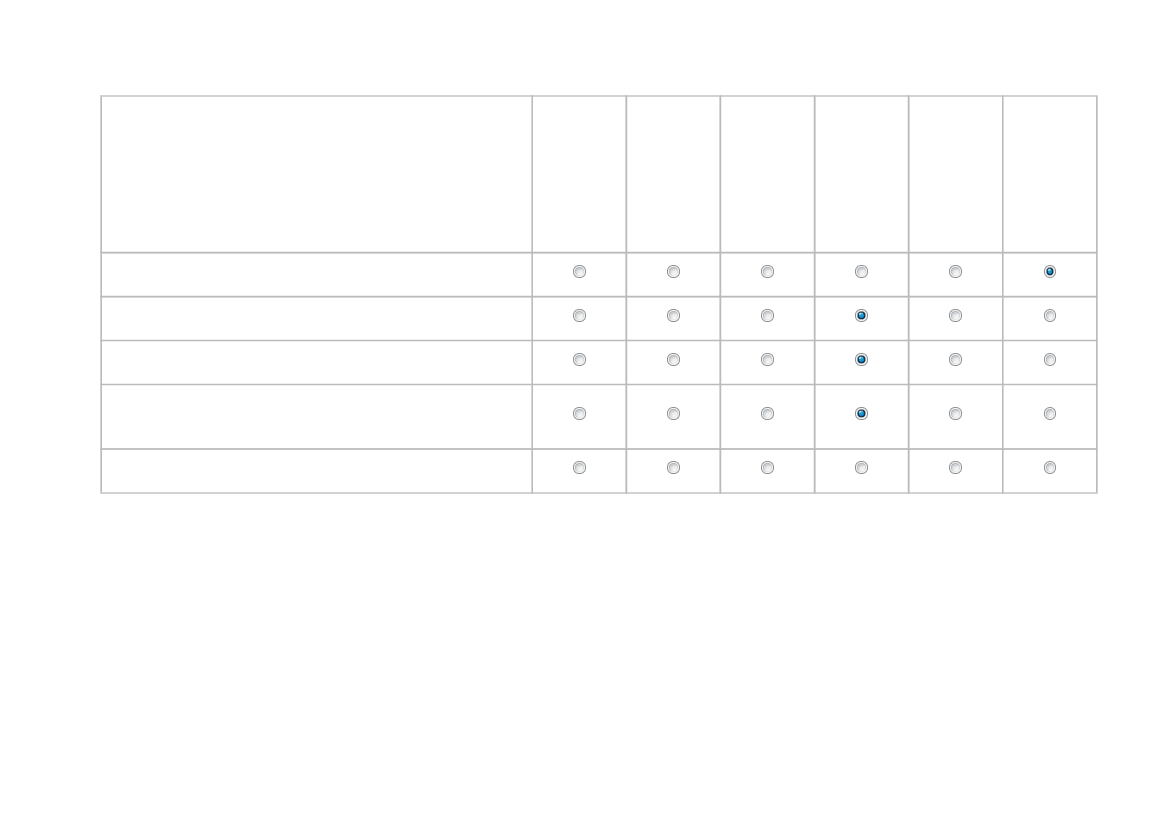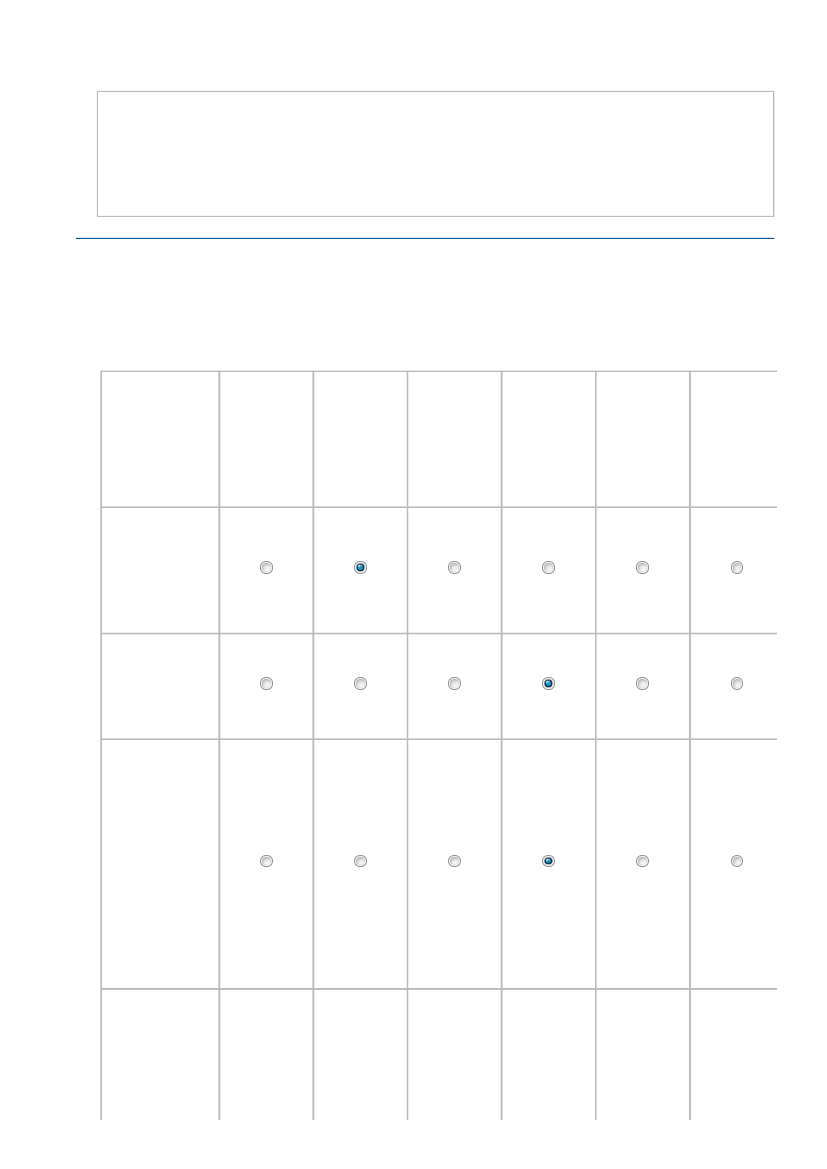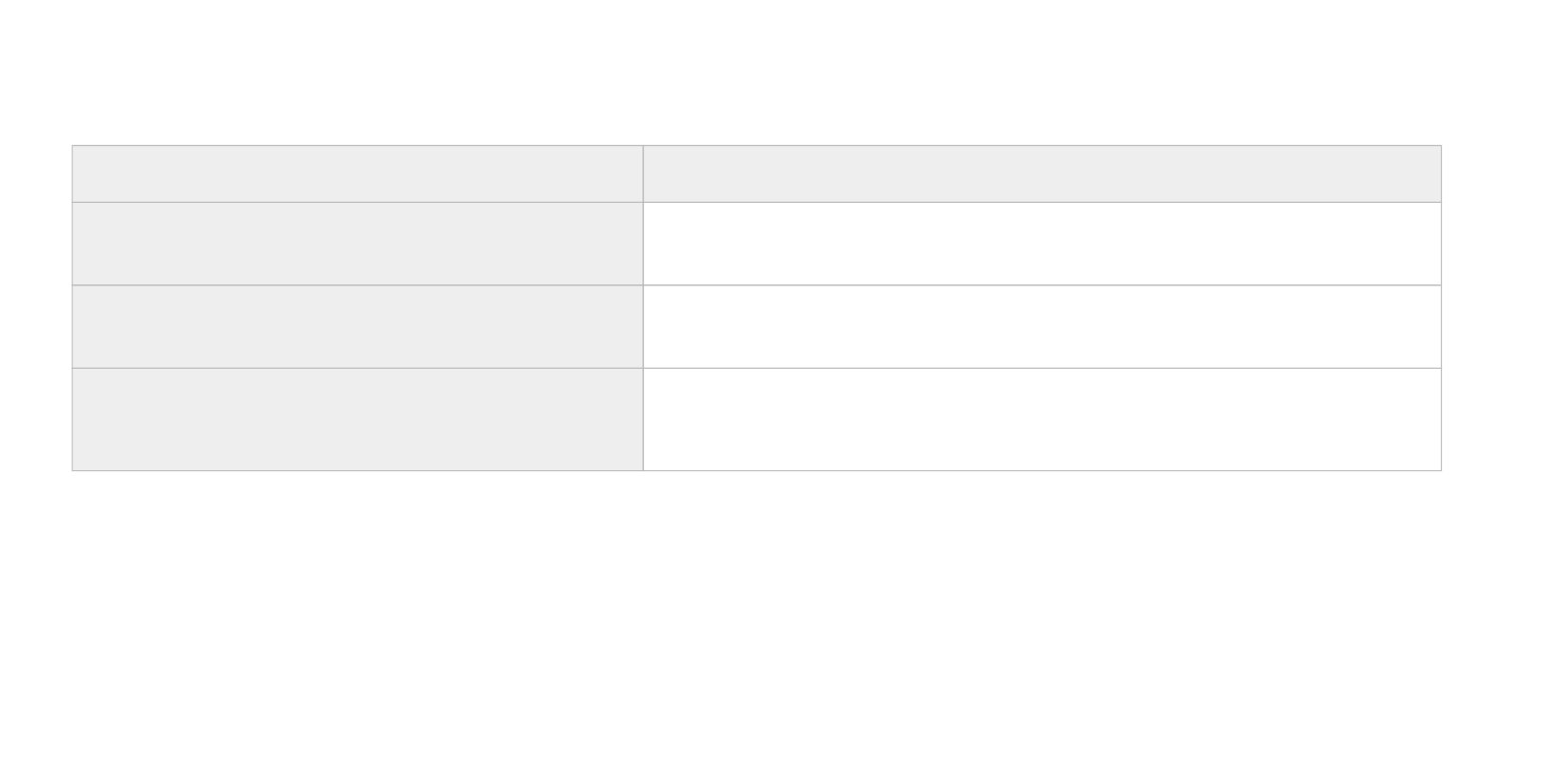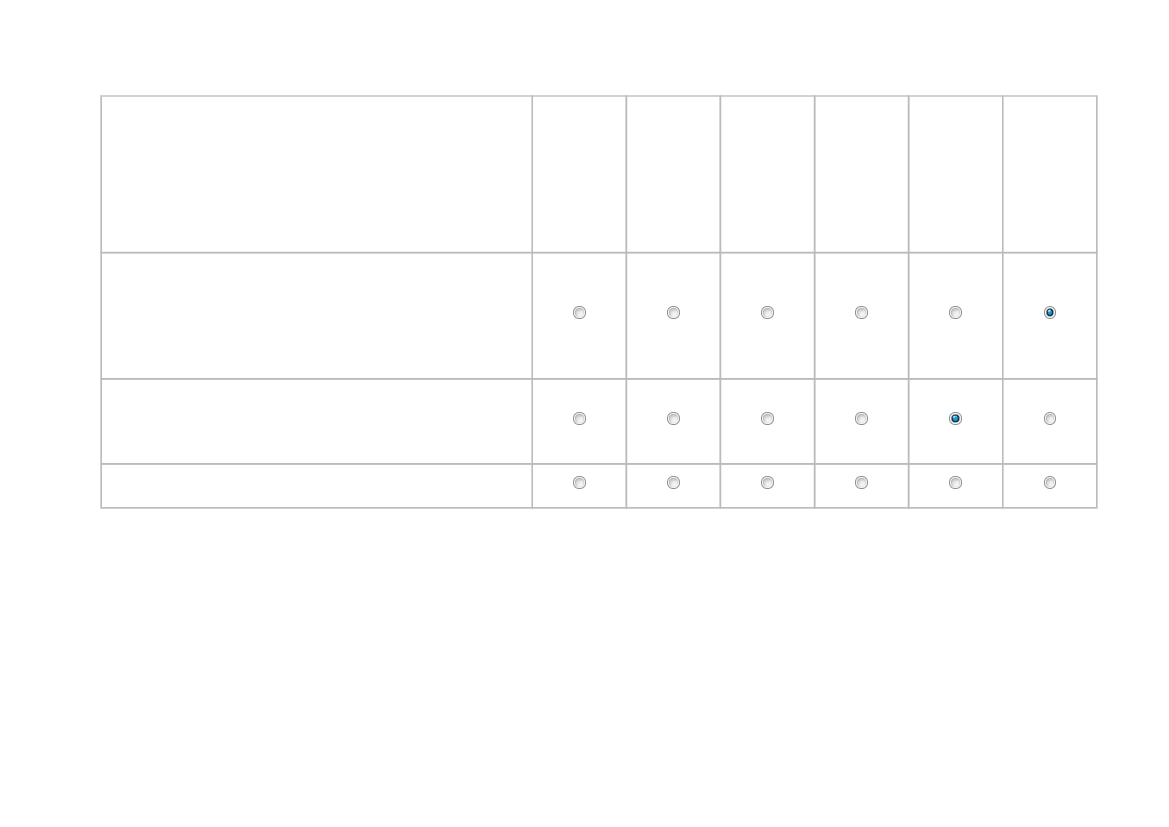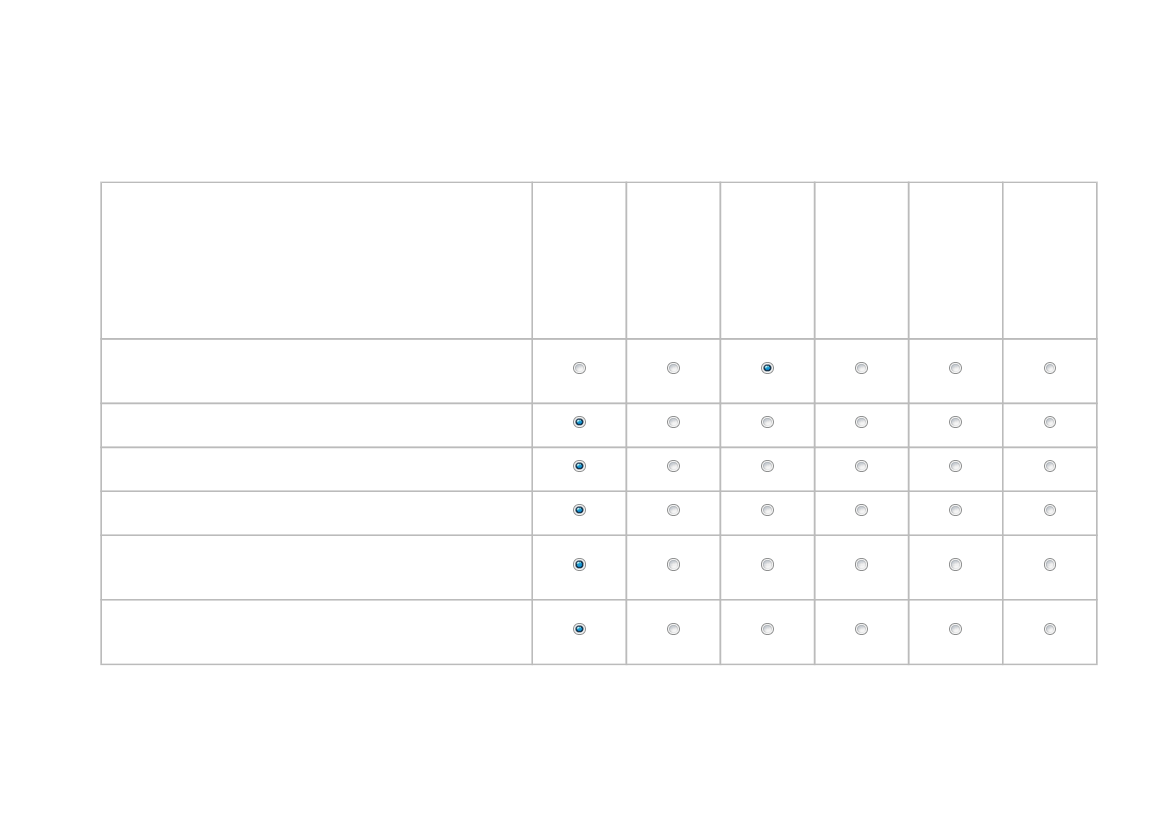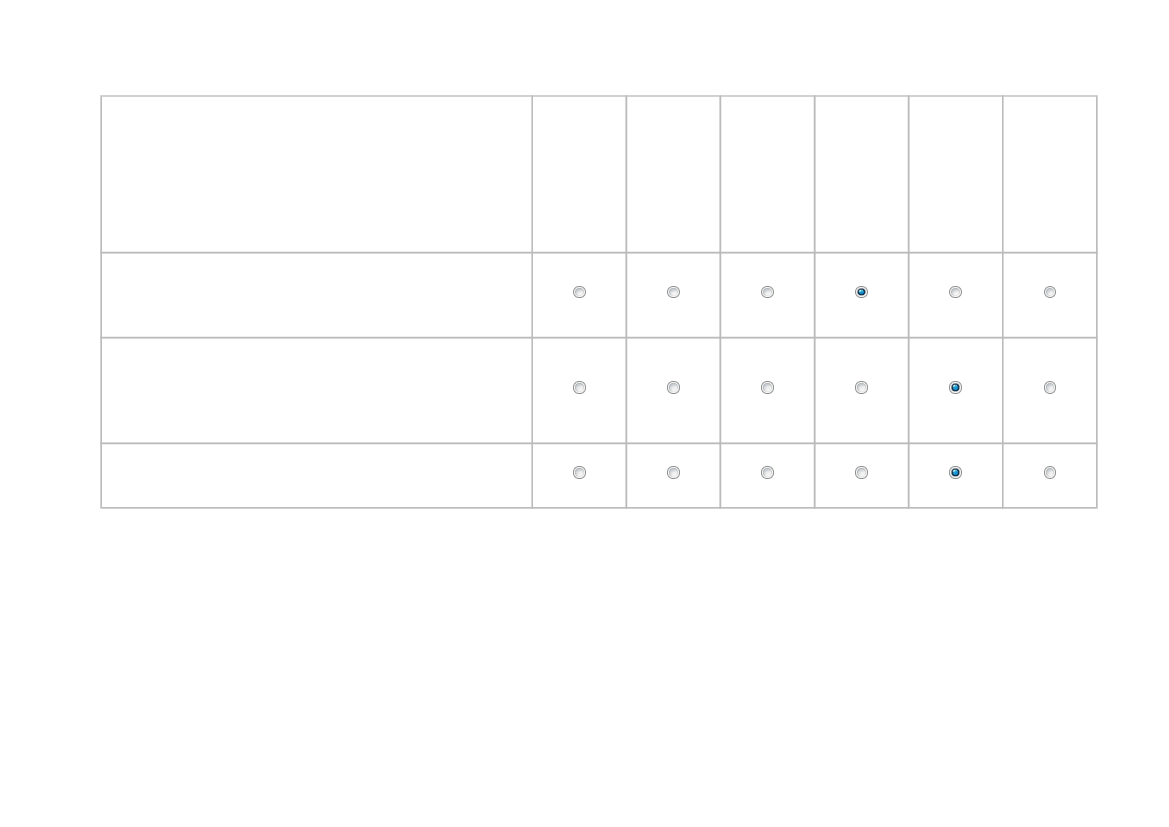Europaudvalget 2023-24
EUU Alm.del Bilag 214
Offentligt
Contribution ID: f91be203-0635-45f5-b7e2-4f725f5873da
Date: 21/12/2023 14:08:30
Targeted consultation on the implementation
of the Sustainable Finance Disclosures
Regulation (SFDR)
Fields marked with * are mandatory.
Introduction
The
Sustainable Finance Disclosures Regulation (SFDR)
started applying in March 2021 and requires financial market
participants and financial advisers to disclose at entity and product levels how they integrate sustainability risks and
principal adverse impacts in their processes at both entity and product levels. It also introduces additional product
disclosures for sustainable financial products making sustainability claims.
This targeted consultation aims at gathering information from a wide range of stakeholders, including financial
practitioners, non-governmental organisations, national competent authorities, as well as professional and retail
investors, on their experiences with the implementation of the SFDR. The Commission is interested in understanding
how the SFDR has been implemented and any potential shortcomings, including in its interaction with the other parts of
the European framework for sustainable finance, and in exploring possible options to improve the framework.
The main topics to be covered in this questionnaire are:
1. current requirements of the SFDR
2. interaction with other sustainable finance legislation
3. potential changes to the disclosure requirements for financial market participants
4. potential establishment of a categorisation system for financial products
Sections 1 and 2 cover the SFDR as it is today, exploring how the regulation is working in practice and the potential
issues stakeholders might be facing in implementing it. Sections 3 and 4 look to the future, assessing possible options
to address any potential shortcomings. As there are crosslinks between aspects covered in the different sections,
respondents are encouraged to look at the questionnaire in its entirety and adjust their replies accordingly.
Please note that::
we advise you to
save your draft reply regularly
by clicking on the “
Save as draft
” button on the right side of
1
EUU, Alm.del - 2023-24 - Bilag 214: Orienteringsnotat, høringssvar og ministerbrev om dansk høringssvar vedr. Kommissionens offentlige høring om revision af SFDR (disclosureforordningen)
we advise you to
save your draft reply regularly
by clicking on the “
Save as draft
” button on the right side of
the screen
some questions of this online questionnaire are displayed only when a specific response is given to a previous
question
in order to ensure a fair and transparent consultation process
only responses received through our online
questionnaire will be taken into account
and included in the report summarising the responses. Should you
have a problem completing this questionnaire or if you require particular assistance, please contact
fisma-
sfdr@ec.europa.eu
More information on
this consultation
the consultation document
the related public consultation
sustainability-related disclosure in the financial services sector
the protection of personal data regime for this consultation
About you
*
Language
of my contribution
Bulgarian
Croatian
Czech
Danish
Dutch
English
Estonian
Finnish
French
German
Greek
Hungarian
Irish
Italian
Latvian
2
EUU, Alm.del - 2023-24 - Bilag 214: Orienteringsnotat, høringssvar og ministerbrev om dansk høringssvar vedr. Kommissionens offentlige høring om revision af SFDR (disclosureforordningen)
Lithuanian
Maltese
Polish
Portuguese
Romanian
Slovak
Slovenian
Spanish
Swedish
*
I
am giving my contribution as
Academic/research institution
Business association
Company/business
Consumer organisation
EU citizen
Environmental organisation
Non-EU citizen
Non-governmental organisation (NGO)
Public authority
Trade union
Other
*
First
name
Christine
*
Surname
Søby
*
Email
(this won't be published)
chso@ftnet.dk
*
Organisation
name
255 character(s) maximum
The Danish Financial Supervisory Authority (the Danish FSA).
3
EUU, Alm.del - 2023-24 - Bilag 214: Orienteringsnotat, høringssvar og ministerbrev om dansk høringssvar vedr. Kommissionens offentlige høring om revision af SFDR (disclosureforordningen)
*
Organisation
size
Micro (1 to 9 employees)
Small (10 to 49 employees)
Medium (50 to 249 employees)
Large (250 or more)
Transparency register number
255 character(s) maximum
Check if your organisation is on the
transparency register
. It's a voluntary database for organisations seeking to
influence EU decision-making.
*
Country
of origin
Djibouti
Dominica
Dominican
Republic
Libya
Liechtenstein
Lithuania
Saint Martin
Saint Pierre and
Miquelon
Saint Vincent
and the
Grenadines
Luxembourg
Macau
Madagascar
Malawi
Malaysia
Maldives
Mali
Malta
Marshall Islands
Martinique
Mauritania
Mauritius
Mayotte
Samoa
San Marino
São Tomé and
Príncipe
Saudi Arabia
Senegal
Serbia
Seychelles
Sierra Leone
Singapore
Sint Maarten
Slovakia
Slovenia
Solomon Islands
Please add your country of origin, or that of your organisation.
Afghanistan
Åland Islands
Albania
Algeria
American Samoa
Andorra
Angola
Anguilla
Antarctica
Antigua and
Barbuda
Argentina
Armenia
Aruba
Australia
Austria
Azerbaijan
Ecuador
Egypt
El Salvador
Equatorial Guinea
Eritrea
Estonia
Eswatini
Ethiopia
Falkland Islands
Faroe Islands
Fiji
Finland
France
4
EUU, Alm.del - 2023-24 - Bilag 214: Orienteringsnotat, høringssvar og ministerbrev om dansk høringssvar vedr. Kommissionens offentlige høring om revision af SFDR (disclosureforordningen)
Bahamas
Bahrain
Bangladesh
French Guiana
French Polynesia
French Southern
and Antarctic
Lands
Mexico
Micronesia
Moldova
Somalia
South Africa
South Georgia
and the South
Sandwich
Islands
Barbados
Belarus
Belgium
Belize
Benin
Bermuda
Bhutan
Bolivia
Bonaire Saint
Eustatius and
Saba
Bosnia and
Herzegovina
Botswana
Bouvet Island
Brazil
British Indian
Ocean Territory
British Virgin
Islands
Brunei
Bulgaria
Burkina Faso
Burundi
Cambodia
Gabon
Georgia
Germany
Ghana
Gibraltar
Greece
Greenland
Grenada
Guadeloupe
Monaco
Mongolia
Montenegro
Montserrat
Morocco
Mozambique
Myanmar/Burma
Namibia
Nauru
South Korea
South Sudan
Spain
Sri Lanka
Sudan
Suriname
Svalbard and
Jan Mayen
Sweden
Switzerland
Guam
Guatemala
Guernsey
Guinea
Guinea-Bissau
Guyana
Haiti
Heard Island and
McDonald Islands
Honduras
Hong Kong
Hungary
Nepal
Netherlands
New Caledonia
New Zealand
Nicaragua
Niger
Nigeria
Niue
Norfolk Island
Northern
Mariana Islands
North Korea
Syria
Taiwan
Tajikistan
Tanzania
Thailand
The Gambia
Timor-Leste
Togo
Tokelau
Tonga
Trinidad and
Tobago
5
EUU, Alm.del - 2023-24 - Bilag 214: Orienteringsnotat, høringssvar og ministerbrev om dansk høringssvar vedr. Kommissionens offentlige høring om revision af SFDR (disclosureforordningen)
Cameroon
Canada
Cape Verde
Cayman Islands
Central African
Republic
Chad
Chile
China
Christmas Island
Clipperton
Cocos (Keeling)
Islands
Colombia
Comoros
Congo
Cook Islands
Costa Rica
Côte d’Ivoire
Croatia
Cuba
Curaçao
Cyprus
Czechia
Iceland
India
Indonesia
Iran
Iraq
Ireland
Isle of Man
Israel
Italy
Jamaica
Japan
North Macedonia
Norway
Oman
Pakistan
Palau
Palestine
Panama
Papua New
Guinea
Paraguay
Peru
Philippines
Tunisia
Turkey
Turkmenistan
Turks and
Caicos Islands
Tuvalu
Uganda
Ukraine
United Arab
Emirates
United Kingdom
United States
United States
Minor Outlying
Islands
Jersey
Jordan
Kazakhstan
Kenya
Kiribati
Kosovo
Kuwait
Kyrgyzstan
Laos
Latvia
Lebanon
Pitcairn Islands
Poland
Portugal
Puerto Rico
Qatar
Réunion
Romania
Russia
Rwanda
Saint Barthélemy
Saint Helena
Ascension and
Tristan da Cunha
Uruguay
US Virgin Islands
Uzbekistan
Vanuatu
Vatican City
Venezuela
Vietnam
Wallis and
Futuna
Western Sahara
Yemen
Zambia
Democratic
Republic of the
Congo
Denmark
*
Field
Lesotho
Saint Kitts and
Nevis
Zimbabwe
Liberia
Saint Lucia
of activity or sector
6
EUU, Alm.del - 2023-24 - Bilag 214: Orienteringsnotat, høringssvar og ministerbrev om dansk høringssvar vedr. Kommissionens offentlige høring om revision af SFDR (disclosureforordningen)
Accounting
Auditing
Banking
Credit rating agencies
Insurance
Pension provision
Investing
Investment management (e.g. hedge funds, private equity funds, venture
capital funds, money market funds, securities)
Financial advice
Administration of benchmarks
Providing of ESG data and/or ratings
Structuring/issuance of securities
Market infrastructure operation (e.g. CCPs, CSDs, Stock exchanges)
Social entrepreneurship
Other
Not applicable
*
Please
specify your activity field(s) or sector(s)
The Danish Financial Supervisory Authority (the Danish FSA) is part of the Danish public administration.
*
To
which category do you mainly belong or do you mainly represent:
I am a financial market participant as defined in Article 2(1) of the Sustainable
Finance Disclosure Regulation (SFDR)
I am a financial adviser as defined in Article 2(11) of SFDR
I am both a financial market participant as defined in Article 2(1) of the SFDR
and a financial adviser as defined in Article 2(11) of SFDR
I am another type of financial undertaking that does not fall under th definition
of financial market participant of the SFDR
I am a non-financial undertaking
I am a non-professional investor
I am a professional investor
I am a national authority or supervisor
I am an NGO
I am an ESG data and/or ratings provider
7
EUU, Alm.del - 2023-24 - Bilag 214: Orienteringsnotat, høringssvar og ministerbrev om dansk høringssvar vedr. Kommissionens offentlige høring om revision af SFDR (disclosureforordningen)
I am a benchmark administrator
I am an academic
My organisation is none of the above
The Commission will publish all contributions to this targeted consultation. You can choose whether you
would prefer to have your details published or to remain anonymous when your contribution is published.
Fo
r the purpose of transparency, the type of respondent (for example, ‘business association,
‘consumer association’, ‘EU citizen’) country of origin, organisation name and size, and its
transparency register number, are always published. Your e-mail address will never be published.
Opt in to select the privacy option that best suits you. Privacy options default based on the type of
respondent selected
*
Contribution
publication privacy settings
The Commission will publish the responses to this public consultation. You can choose whether you would like
your details to be made public or to remain anonymous.
Anonymous
Only organisation details are published: The type of respondent that you
responded to this consultation as, the name of the organisation on whose
behalf you reply as well as its transparency number, its size, its country of
origin and your contribution will be published as received. Your name will not
be published. Please do not include any personal data in the contribution itself
if you want to remain anonymous.
Public
Organisation details and respondent details are published: The type of
respondent that you responded to this consultation as, the name of the
organisation on whose behalf you reply as well as its transparency number, its
size, its country of origin and your contribution will be published. Your name
will also be published.
I agree with the
personal data protection provisions
Would you be available for follow-up questions under the contact information
you provided above?
Yes
No
Section 1. Current requirements of the SFDR
8
EUU, Alm.del - 2023-24 - Bilag 214: Orienteringsnotat, høringssvar og ministerbrev om dansk høringssvar vedr. Kommissionens offentlige høring om revision af SFDR (disclosureforordningen)
The EU’s sustainable finance policy is designed to attract private investment to support the transition to a sustainable,
climate-neutral economy. The SFDR is designed to contribute to this objective by providing transparency to investors
about the sustainability risks that can affect the value of and return on their investments (‘outside-in’ effect) and the
adverse impacts that such investments have on the environment and society (‘inside-out’). This is known as double
materiality. This section of the questionnaire seeks to assess to what extent respondents consider that the SFDR is
meeting its objectives in an effective and efficient manner and to identify their views about potential issues in the
implementation of the regulation.
We are seeking the views of respondents on how the SFDR works in practice. In particular, we would like to know more
about potential issues stakeholders might have encountered regarding the concepts it establishes and the disclosures it
requires.
Question 1.1 The SFDR seeks to strengthen transparency through
sustainability-related disclosures in the financial services sector to support
the EU’s shift to a sustainable, climate neutral economy.
In your view, is this broad objective of the regulation still relevant?
1 - Not at all
2 - To a limited extent
3 - To some extent
4 - To a large extent
5 - To a very large extent
Don’t know / no opinion / not applicable
9
EUU, Alm.del - 2023-24 - Bilag 214: Orienteringsnotat, høringssvar og ministerbrev om dansk høringssvar vedr. Kommissionens offentlige høring om revision af SFDR (disclosureforordningen)
Question 1.2 Do you think the SFDR disclosure framework is effective in achieving the following specific
objectives (included in its
Explanatory Memorandum
and mentioned in its recitals):
Note: In this questionnaire we refer to the term ‘end investor’ (retail or professional) to designate the ultimate beneficiary of
the investments in financial products (as defined under the SFDR) made by a person for their own account.
1
(totally
disagree)
2
(mostly
disagree)
3
(partially
disagree
and
partially
agree)
4
(mostly
agree)
5
(totally
agree)
Don't
know -
No
opinion -
Not
applicable
Increasing transparency towards end investor with regard to the
integration of sustainability risks
Increasing transparency towards end investor with regard to the
consideration of adverse sustainability impacts
Strengthening protection of end investors and making it easier for
them to benefit from and compare among a wide range of financial
products and services, including those with sustainability claims
Channelling capital towards investments considered sustainable,
including transitional investments (‘investments considered
sustainable’ should be understood in a broad sense, not limited to
the definition of sustainable investment set out in Article 2(17) of
SFDR)
10
EUU, Alm.del - 2023-24 - Bilag 214: Orienteringsnotat, høringssvar og ministerbrev om dansk høringssvar vedr. Kommissionens offentlige høring om revision af SFDR (disclosureforordningen)
Ensuring that ESG considerations are integrated into the
investment and advisory process in a consistent manner across
the different financial services sectors
Ensuring that remuneration policies of financial market participants
and financial advisors are consistent with the integration of
sustainability risks and, where relevant, sustainable investment
targets and designed to contribute to long-term sustainable growth
11
EUU, Alm.del - 2023-24 - Bilag 214: Orienteringsnotat, høringssvar og ministerbrev om dansk høringssvar vedr. Kommissionens offentlige høring om revision af SFDR (disclosureforordningen)
Question 1.3 Do you agree that opting for a disclosure framework at EU level
was more effective and efficient in seeking to achieve the objectives
mentioned in Question 1.2 than if national measures had been taken at
Member State level?
1 - Totally disagree
2 - Mostly disagree
3 - Partially disagree and partially agree
4 - Mostly agree
5 - Totally agree
Don’t know / no opinion / not applicable
Question 1.4 Do you agree that the costs of disclosure under the SFDR
framework are proportionate to the benefits it generates (informing end
investors, channelling capital towards sustainable investments)?
1 - Totally disagree
2 - Mostly disagree
3 - Partially disagree and partially agree
4 - Mostly agree
5 - Totally agree
Don’t know / no opinion / not applicable
We are seeking the views of respondents on how the SFDR works in practice and the impact it has had.
12
EUU, Alm.del - 2023-24 - Bilag 214: Orienteringsnotat, høringssvar og ministerbrev om dansk høringssvar vedr. Kommissionens offentlige høring om revision af SFDR (disclosureforordningen)
Question 1.5 To what extent do you agree with the following statements?
1
(totally
disagree)
2
(mostly
disagree)
3
(partially
disagree
and
partially
agree)
4
(mostly
agree)
5
(totally
agree)
Don't
know -
No
opinion -
Not
applicable
The SFDR has raised awareness in the financial services sector of
the potential negative impacts that investment decisions can have
on the environment and/or people
Financial market participants have changed the way they make
investment decisions and design products since they have been
required to disclose sustainability risks and adverse impacts at
entity and product level under the SFDR
The SFDR has had indirect positive effects by increasing pressure
on investee companies to act in a more sustainable manner
13
EUU, Alm.del - 2023-24 - Bilag 214: Orienteringsnotat, høringssvar og ministerbrev om dansk høringssvar vedr. Kommissionens offentlige høring om revision af SFDR (disclosureforordningen)
We would also like to know more about potential issues stakeholders might have encountered regarding the concepts
that the SFDR establishes and the disclosures it requires.
14
EUU, Alm.del - 2023-24 - Bilag 214: Orienteringsnotat, høringssvar og ministerbrev om dansk høringssvar vedr. Kommissionens offentlige høring om revision af SFDR (disclosureforordningen)
Question 1.6 To what extent do you agree or disagree with the following statements?
1
(totally
disagree)
2
(mostly
disagree)
3
(partially
disagree
and
partially
agree)
4
(mostly
agree)
5
(totally
agree)
Don't
know -
No
opinion -
Not
applicable
Some disclosures required by the SFDR are not sufficiently useful
to investors
Some legal requirements and concepts in the SFDR, such as
‘sustainable investment’, are not sufficiently clear
The SFDR is not used as a disclosure framework as intended, but
as a labelling and marketing tool (in particular Articles 8 and 9)
Data gaps make it challenging for market participants to disclose
fully in line with the legal requirements under the SFDR
Re-use of data for disclosures is hampered by a lack of a common
machine-readable format that presents data in a way that makes
them easy to extract
There are other deficiencies with the SFDR rules (please in text
box following question 1.7)
15
EUU, Alm.del - 2023-24 - Bilag 214: Orienteringsnotat, høringssvar og ministerbrev om dansk høringssvar vedr. Kommissionens offentlige høring om revision af SFDR (disclosureforordningen)
Question 1.7 To what extent do you agree or disagree with the following statements?
1
(totally
disagree)
2
(mostly
disagree)
3
(partially
disagree
and
partially
agree)
4
(mostly
agree)
5
(totally
agree)
Don't
know -
No
opinion -
Not
applicable
The issues raised in question 1.6 create legal uncertainty for
financial market participants and financial advisers
The issues raised in question 1.6 create reputational risks for
financial market participants and financial advisers
The issues raised in question 1.6 do not allow distributors to have
a sufficient or robust enough knowledge of the sustainability profile
of the products they distribute
The issues raised in question 1.6 create a risk of greenwashing
and mis-selling
The issues raised in question 1.6 prevent capital from being
allocated to sustainable investments as effectively as it could be
The current framework does not effectively capture investments in
transition assets
The current framework does not effectively support a robust
enough use of shareholder engagement as a means to support the
transition
16
EUU, Alm.del - 2023-24 - Bilag 214: Orienteringsnotat, høringssvar og ministerbrev om dansk høringssvar vedr. Kommissionens offentlige høring om revision af SFDR (disclosureforordningen)
Others
17
EUU, Alm.del - 2023-24 - Bilag 214: Orienteringsnotat, høringssvar og ministerbrev om dansk høringssvar vedr. Kommissionens offentlige høring om revision af SFDR (disclosureforordningen)
Please provide any additional explanations as necessary for questions 1.5,
1.6 and 1.7:
5000 character(s) maximum
including spaces and line breaks, i.e. stricter than the MS Word characters counting method.
In terms of any “other deficiencies with the SFDR”, we believe the framework could be strengthened further
through:
- A clear definition of transition investments/products at level 1.
- A further specification on the use of EU climate benchmarks in, respectively, active and passive investment
strategies for, respectively, “Article 8” and “Article 9” SFDR products.
- Setting minimum requirements for "E/S characteristics" or replacing it with a minimum percentage of
sustainable investments for "Article 8" SFDR products.
- Setting further and explicit requirements for DNSH, good governance and social contributions. This could
be supplemented by a “social framework” in SFDR to complement the EU taxonomy.
Disclosures of principal adverse impacts (PAIs)
There are several disclosures concerning PAIs in the SFDR. As a general rule, the SFDR requires financial market
participants who consider PAIs to disclose them at entity level on their website. It also includes a mandatory
requirement for financial market participants to provide such disclosures when they have more than 500 employees
(Article 4). The
Delegated Regulation
of the SFDR includes a list of these PAI indicators. These entity level PAI
indicators are divided into three tables in the Delegated Regulation. Indicators listed in table 1 are mandatory for all
participants, and indicators in tables 2 and 3 are subject to a materiality assessment by the financial market participant
(at least one indicator from table 2 and one from table 3 must be included in every PAI statement).
Second, the SFDR requires financial market participants who consider PAIs at entity level to indicate in the pre-
contractual documentation whether their financial products consider PAIs (Article 7) and to report the impacts in the
corresponding periodic disclosures (Article 11). When reporting these impacts, financial market participants may rely on
the PAI indicators defined at entity level in the Delegated Regulation.
Finally, in accordance with the empowerment given in Article 2a of SFDR, the Delegated Regulation requires that the
do no significant harm (DNSH) assessment of the sustainable investment definition is carried out by taking into account
the PAI indicators defined at entity level in Annex I of the Delegated Regulation.
In this context:
18
EUU, Alm.del - 2023-24 - Bilag 214: Orienteringsnotat, høringssvar og ministerbrev om dansk høringssvar vedr. Kommissionens offentlige høring om revision af SFDR (disclosureforordningen)
Question 1.8 To what extent do you agree with the following statements about entity level disclosures?
1
(totally
disagree)
2
(mostly
disagree)
3
(partially
disagree
and
partially
agree)
4
(mostly
agree)
5
(totally
agree)
Don't
know -
No
opinion -
Not
applicable
I find it appropriate that certain indicators are always considered
material (i.e. “principal”) to the financial market participant for its
entity level disclosures, while having other indicators subject to a
materiality assessment by the financial market participant
(approach taken in Annex I of the SFDR Delegated Regulation)
I would find it appropriate that all indicators are always considered
material (i.e. “principal”) to the financial market participant for its
entity level disclosures
I would find it appropriate that all indicators are always subject to a
materiality assessment by the financial market participant for its
entity level disclosures
19
EUU, Alm.del - 2023-24 - Bilag 214: Orienteringsnotat, høringssvar og ministerbrev om dansk høringssvar vedr. Kommissionens offentlige høring om revision af SFDR (disclosureforordningen)
Question 1.8.1 When following the approach described in the first statement
of question 1.8 above, do you agree that the areas covered by the current
indicators listed in table 1 of the Delegated Regulation are the right ones to
be considered material in all cases?
1 - Totally disagree
2 - Mostly disagree
3 - Partially disagree and partially agree
4 - Mostly agree
5 - Totally agree
Don’t know / no opinion / not applicable
20
EUU, Alm.del - 2023-24 - Bilag 214: Orienteringsnotat, høringssvar og ministerbrev om dansk høringssvar vedr. Kommissionens offentlige høring om revision af SFDR (disclosureforordningen)
Question 1.9 To what extent do you agree with the following statements about product level disclosures?
1
(totally
disagree)
2
(mostly
disagree)
3
(partially
disagree
and
partially
agree)
4
(mostly
agree)
5
(totally
agree)
Don't
know -
No
opinion -
Not
applicable
The requirement to ‘take account of’ PAI indicators listed in Annex
I of the Delegated Regulation for the DNSH assessment, does not
create methodological challenges
In the context of product disclosures for the do no significant harm
(DNSH) assessment, it is clear how materiality of principal adverse
impact (PAI) indicators listed in Annex I of the Delegated
Regulation should be applied
The possibility to consider the PAI indicators listed in Annex I of
the Delegated Regulation for product level disclosures of Article 7
do not create methodological challenges
It is clear how the disclosure requirements of Article 7 as regards
principal adverse impacts interact with the requirement to disclose
information according to Article 8 when the product promotes
environmental and/or social characteristics and with the
requirement to disclose information according to Article 9 when the
product has sustainable investment as its objective
21
EUU, Alm.del - 2023-24 - Bilag 214: Orienteringsnotat, høringssvar og ministerbrev om dansk høringssvar vedr. Kommissionens offentlige høring om revision af SFDR (disclosureforordningen)
Please provide any additional explanations as necessary for questions 1.8,
1.8.1 and 1.9:
5000 character(s) maximum
including spaces and line breaks, i.e. stricter than the MS Word characters counting method.
- We support alignment of SFDR with CSRD/ESRS, also in terms of a potential materiality assessment/test
in PAI reporting.
- In terms of the use of PAI in the DNSH test, it could be further highlighted that all the mandatory PAI
indicators must be used, and add a requirement for FMPs to disclose the thresholds and criteria used to
determine when significant harm is done for each of the PAI indicators.
- It would increase the simplicity and comparability of SFDR, if the mandatory PAI indicators had to be used
for Article 7 reporting, and to make Article 7 reporting mandatory for all "Article 8" and "Article 9" SFDR
products.
The cost of disclosures under the SFDR today
Questions 1.10, 1.10.1 and 1.11 are intended for financial market participants and financial
advisors subject to the SFDR.
The following two questions aim to assess the costs of the SFDR disclosure requirements distinguishing between one-
off and recurring costs. One-off costs are incurred only once to implement a new reporting requirement, e.g. getting
familiarised with the legal act and the associated regulatory or implementing technical standards, setting-up data
collection processes or adjusting IT-systems. Recurring costs occur repeatedly every year once the new reporting is in
place, e.g. costs of annual data collection and report preparation. In the specific case of precontractual disclosures for
example, there are one-off costs to set up the process of publishing precontractual disclosures when a new product is
launched, and recurring annual costs to repeat the process of publishing pre-contractual disclosures each time a new
product is launched (depends on the number of products launched on average each year). These two questions apply
both to entity and product level disclosures.
22
EUU, Alm.del - 2023-24 - Bilag 214: Orienteringsnotat, høringssvar og ministerbrev om dansk høringssvar vedr. Kommissionens offentlige høring om revision af SFDR (disclosureforordningen)
Question 1.10 Could you provide estimates of the one-off and recurring annual costs associated with complying
with the SFDR disclosure requirements (EUR)?
Please split these estimates between internal costs incurred by the financial market participant and any external
services contracted to assist in complying with the requirements (services from third-party data providers,
advisory services, etc.).
If such a breakdown is not possible, please provide the total figures.
Please leave the cell blank for the data you are not able to provide.
Estimated one off costs
(in euros)
Estimated recurring annual costs
(in euros)
Total internal costs
Internal costs for personnel
Internal costs for IT
Total external costs
External costs for data providers
External costs for advisory services
23
EUU, Alm.del - 2023-24 - Bilag 214: Orienteringsnotat, høringssvar og ministerbrev om dansk høringssvar vedr. Kommissionens offentlige høring om revision af SFDR (disclosureforordningen)
Total costs of SFDR disclosure
requirements
24
EUU, Alm.del - 2023-24 - Bilag 214: Orienteringsnotat, høringssvar og ministerbrev om dansk høringssvar vedr. Kommissionens offentlige høring om revision af SFDR (disclosureforordningen)
Question 1.10.1: Could you split the total costs between product level and entity level disclosures?
Please leave the cell blank for the data you are not able to provide.
Product-level disclosures
(in %)
Entity-level disclosures
(in %)
Estimated percentage of costs
25
EUU, Alm.del - 2023-24 - Bilag 214: Orienteringsnotat, høringssvar og ministerbrev om dansk høringssvar vedr. Kommissionens offentlige høring om revision af SFDR (disclosureforordningen)
If you wish, please provide additional details:
5000 character(s) maximum
including spaces and line breaks, i.e. stricter than the MS Word characters counting method.
Question 1.11 In order to have a better understanding of internal costs, could
you provide an estimate of how many full-time-equivalents (FTEs - 1 FTE
corresponds to 1 employee working full-time the whole year) are involved in
preparing SFDR disclosures?
5000 character(s) maximum
including spaces and line breaks, i.e. stricter than the MS Word characters counting method.
26
EUU, Alm.del - 2023-24 - Bilag 214: Orienteringsnotat, høringssvar og ministerbrev om dansk høringssvar vedr. Kommissionens offentlige høring om revision af SFDR (disclosureforordningen)
Question 1.11.1 Could you please provide a split between:
Please leave the cell blank for the data you are not able to provide.
Retrieving the data
(in %)
Analysing the data
(in %)
Reporting SFDR disclosures
(in %)
Other
(in %)
Estimated percentage
27
EUU, Alm.del - 2023-24 - Bilag 214: Orienteringsnotat, høringssvar og ministerbrev om dansk høringssvar vedr. Kommissionens offentlige høring om revision af SFDR (disclosureforordningen)
Please specify what corresponds to “other” costs:
5000 character(s) maximum
including spaces and line breaks, i.e. stricter than the MS Word characters counting method.
Data and estimates
Financial market participants' and financial advisers’ ability to fulfil their ESG transparency requirements depends in
part on other disclosure requirements under the EU framework. In particular, they will rely to a significant extent on the
Corporate Sustainability Reporting Directive (CSRD)
. However, entities are not reporting yet under those new
disclosure requirements, or they may not be within the scope of the CSRD. Besides, even when data is already
available today, it may not always be of good quality.
Question 1.12 Are you facing difficulties in obtaining good-quality data?
Yes
No
Don’t know / no opinion / not applicable
Question 1.12.2 Is the SFDR sufficiently flexible to allow for the use of
estimates?
1 - Not at all
2 - To a limited extent
3 - To some extent
4 - To a large extent
5 - To a very large extent
Don’t know / no opinion / not applicable
Question 1.12.3 Is it clear what kind of estimates are allowed by the SFDR?
1 - Not at all
2 - To a limited extent
3 - To some extent
4 - To a large extent
5 - To a very large extent
Don’t know / no opinion / not applicable
Question 1.12.4 If you use estimates, what kind of estimates do you use to fill the data gap?
28
EUU, Alm.del - 2023-24 - Bilag 214: Orienteringsnotat, høringssvar og ministerbrev om dansk høringssvar vedr. Kommissionens offentlige høring om revision af SFDR (disclosureforordningen)
a) For entity level principal adverse impacts:
Don't
1
(not at all)
2
(to a
limited
extent)
3
(to some
extent)
4
(to a large
extent)
5
(to a very
large
extent)
know -
No
opinion -
Not
applicable
Estimates
from data
providers,
based on
data coming
from the
investee
companies
Estimates
from data
providers,
based on
data coming
from other
sources
In-house
estimates
Internal ESG
score models
External
ESG score
models
Other
b) For taxonomy aligned investments (product level):
Don't
1
(not at all)
2
(to a
limited
extent)
3
(to some
extent)
4
(to a large
extent)
5
(to a very
large
extent)
know -
No
opinion -
Not
applicable
Estimates
from data
providers,
29
EUU, Alm.del - 2023-24 - Bilag 214: Orienteringsnotat, høringssvar og ministerbrev om dansk høringssvar vedr. Kommissionens offentlige høring om revision af SFDR (disclosureforordningen)
based on
data coming
from the
investee
companies
Estimates
from data
providers,
based on
data coming
from other
sources
In-house
estimates
Internal ESG
score models
External
ESG score
models
Other
c) For sustainable investments (product level):
Don't
1
(not at all)
2
(to a
limited
extent)
3
(to some
extent)
4
(to a large
extent)
5
(to a very
large
extent)
know -
No
opinion -
Not
applicable
Estimates
from data
providers,
based on
data coming
from the
investee
companies
Estimates
from data
providers,
based on
30
EUU, Alm.del - 2023-24 - Bilag 214: Orienteringsnotat, høringssvar og ministerbrev om dansk høringssvar vedr. Kommissionens offentlige høring om revision af SFDR (disclosureforordningen)
data coming
from other
sources
In-house
estimates
Internal ESG
score models
External
ESG score
models
Other
d) Other data points:
Don't
1
(not at all)
2
(to a
limited
extent)
3
(to some
extent)
4
(to a large
extent)
5
(to a very
large
extent)
know -
No
opinion -
Not
applicable
Estimates
from data
providers,
based on
data coming
from the
investee
companies
Estimates
from data
providers,
based on
data coming
from other
sources
In-house
estimates
Internal ESG
score models
31
EUU, Alm.del - 2023-24 - Bilag 214: Orienteringsnotat, høringssvar og ministerbrev om dansk høringssvar vedr. Kommissionens offentlige høring om revision af SFDR (disclosureforordningen)
External
ESG score
models
Other
Question 1.12.5 Do you engage with investee companies to encourage
reporting of the missing data?
1 - Not at all
2 - To a limited extent
3 - To some extent
4 - To a large extent
5 - To a very large extent
Don’t know / no opinion / not applicable
Please provide further explanations to your replies to questions 1.12 to 1.12.5:
5000 character(s) maximum
including spaces and line breaks, i.e. stricter than the MS Word characters counting method.
Question 1.13 Have you increased your offer of financial products that make
sustainability claims since the disclosure requirements of Articles 8 and 9 of
the SFDR began to apply (i.e. since 2021, have you been offering more
products that you categorise as Articles 8 and 9 than those you offered
before the regulation was in place and for which you also claimed a certain
sustainability performance)?
1 - Not at all
2 - To a limited extent
3 - To some extent
32
EUU, Alm.del - 2023-24 - Bilag 214: Orienteringsnotat, høringssvar og ministerbrev om dansk høringssvar vedr. Kommissionens offentlige høring om revision af SFDR (disclosureforordningen)
4 - To a large extent
5 - To a very large extent
Don’t know / no opinion / not applicable
33
EUU, Alm.del - 2023-24 - Bilag 214: Orienteringsnotat, høringssvar og ministerbrev om dansk høringssvar vedr. Kommissionens offentlige høring om revision af SFDR (disclosureforordningen)
Question 1.13.1 Please specify how the share of financial products making sustainability claims has evolved in
the past years
(Please express it as a percentage of the total financial products you offered each year)
Percentage of the total financial products
2020
2021
2022
2023
34
EUU, Alm.del - 2023-24 - Bilag 214: Orienteringsnotat, høringssvar og ministerbrev om dansk høringssvar vedr. Kommissionens offentlige høring om revision af SFDR (disclosureforordningen)
Question 1.13.2 If you have increased your offering of financial products
making sustainability claims, in your view, has any of the following factors
influenced this increase?
Don't
know -
1
(not at all)
2
(not really)
3
(partially)
4
(mostly)
5
(totally)
No
opinion -
Not
applicable
SFDR
requirements
Retail investor
interest
Professional
investor interest
Market
competitiveness
Other factors
Please provide further explanations to your replies to questions 1.13, 1.13
1 and 1.13.2:
5000 character(s) maximum
including spaces and line breaks, i.e. stricter than the MS Word characters counting method.
Section 2. Interaction with other sustainable finance
legislation
The SFDR interacts with other parts of the EU’s sustainable finance framework. Questions in this section will therefore
seek respondents’ views about the current interactions, as well as potential inconsistencies or misalignments that might
exist between the SFDR and other sustainable finance legislation. There is a need to assess the potential implications
for other sustainable finance legal acts if the SFDR legal framework was changed in the future. Questions as regards
these potential implications are included in section 4 of this questionnaire, when consulting on the potential
establishment of a categorisation system for products, and they do not prejudge future positions that might be taken by
the Commission.
35
EUU, Alm.del - 2023-24 - Bilag 214: Orienteringsnotat, høringssvar og ministerbrev om dansk høringssvar vedr. Kommissionens offentlige høring om revision af SFDR (disclosureforordningen)
The SFDR mainly interacts with the following legislation and their related delegated and implementing acts:
the
Taxonomy Regulation
the
Benchmarks Regulation
the
Corporate Sustainability Reporting Directive (CSRD)
the
Markets in Financial Instruments Directive (MiFID 2)
and the
Insurance Distribution Directive (IDD)
the
Regulation on Packaged Retail Investment and Insurance Products (PRIIPs)
Other legal acts that are currently being negotiated may also interact with the SFDR in the future. They are not covered
in this questionnaire as the detailed requirements of these legal acts have not yet been agreed. At this stage, it would
be speculative to seek to assess how their interaction with SFDR would function.
Both the SFDR and the Taxonomy Regulation introduce key concepts to the sustainable finance framework. Notably,
they introduce definitions of ‘sustainable investment’ (SFDR) and ‘environmentally sustainable’ economic activities
(taxonomy). Both definitions require, inter alia, a contribution to a sustainable objective and a do no significant harm
(DNSH) test. But while these definitions are similar, there are differences between them which could create practical
challenges for market participants.
Question 2.1 The
Commission recently adopted a FAQ
clarifying that
investments in taxonomy-aligned ‘environmentally sustainable’ economic
activities can automatically qualify as ‘sustainable investments’ in those
activities under the SFDR.
To what extent do you agree that this FAQ offers sufficient clarity to market
participants on how to treat taxonomy-aligned investment in the SFDR
product level disclosures?
1 - Totally disagree
2 - Mostly disagree
3 - Partially disagree and partially agree
4 - Mostly agree
5 - Totally agree
Don’t know / no opinion / not applicable
The Benchmarks Regulation introduces two categories of climate benchmarks – the EU climate transition benchmark
(EU CTB) and the EU Paris-aligned benchmark (EU PAB) - and requires benchmark administrators to disclose on ESG
related matters for all benchmarks (except interest rate and foreign exchange benchmarks). The SFDR makes
reference to the CTB and PAB in connection with financial products that have the reduction of carbon emissions as
their objective. Both legal frameworks are closely linked as products disclosing under the SFDR can for example
passively track a CTB or a PAB or use one of them as a reference benchmark in an active investment strategy. More
broadly, passive products rely on the design choices made by the benchmark administrators.
36
EUU, Alm.del - 2023-24 - Bilag 214: Orienteringsnotat, høringssvar og ministerbrev om dansk høringssvar vedr. Kommissionens offentlige høring om revision af SFDR (disclosureforordningen)
Question 2.2 To what extent do you agree or disagree with the following statements?
1
(totally
disagree)
2
(mostly
disagree)
3
(partially
disagree
and
partially
agree)
4
(mostly
agree)
5
(totally
agree)
Don't
know -
No
opinion -
Not
applicable
The
questions
& answers published by the Commission
in April 2023
specifying that the SFDR deems products
passively tracking CTB and PAB to be making ‘sustainable
investments’ as defined in the SFDR provide sufficient clarity to
market participants
The approach to DNSH and good governance in the SFDR is
consistent with the environmental, social and governance
exclusions under the PAB/CTB
The ESG information provided by benchmark administrators is
sufficient and is aligned with the information required by the SFDR
for products tracking or referencing these benchmarks
37
EUU, Alm.del - 2023-24 - Bilag 214: Orienteringsnotat, høringssvar og ministerbrev om dansk høringssvar vedr. Kommissionens offentlige høring om revision af SFDR (disclosureforordningen)
Both the SFDR and the Corporate Sustainability Reporting Directive (CSRD) introduce entity level disclosure
requirements with a double-materiality approach
[1]
. The CSRD sets out sustainability reporting requirements mainly for
all large and all listed undertakings with limited liability (except listed micro-enterprises)
[2]
, while the SFDR introduces
sustainability disclosure requirements at entity level for financial market participants and financial advisers as regards
the consideration of sustainability related factors in their investment decision-making process. Moreover, in order for
financial market participants and financial advisers to meet their product and entity level disclosure obligations under
the SFDR, they will rely to a significant extent, on the information reported according to the CSRD and its
European
Sustainability Reporting Standards (ESRS)
(provided positive scrutiny of co-legislators of the
ESRS delegated act
).
1
Transparency requirements relate to the sustainability risks that can affect the value of investments (SFDR) or companies (CSRD) (‘outside-in’
effect) and the adverse impacts that such investments or companies have on the environment and society (‘inside-out’).
2
Credit institutions and insurance undertakings with unlimited liability are also in scope subject to the same size criteria. Non-EU undertakings
listed on the EU regulated markets and non-EU undertakings with a net turnover above EUR 150 million that carry out business in the EU will
also have to publish certain sustainability-related information through their EU subsidiaries that are subject to CSRD (or - in the absence of such
EU subsidiaries – through their EU branches with net turnover above EUR 40 million).
38
EUU, Alm.del - 2023-24 - Bilag 214: Orienteringsnotat, høringssvar og ministerbrev om dansk høringssvar vedr. Kommissionens offentlige høring om revision af SFDR (disclosureforordningen)
Question 2.3 To what extent do you agree or disagree with the following statements?
1
(totally
disagree)
2
(mostly
disagree)
3
(partially
disagree
and
partially
agree)
4
(mostly
agree)
5
(totally
agree)
Don't
know -
No
opinion -
Not
applicable
The SFDR disclosures are consistent with the CSRD
requirements, in particular with the European Sustainability
Reporting Standards
There is room to streamline the entity level disclosure
requirements of the SFDR and the CSRD
39
EUU, Alm.del - 2023-24 - Bilag 214: Orienteringsnotat, høringssvar og ministerbrev om dansk høringssvar vedr. Kommissionens offentlige høring om revision af SFDR (disclosureforordningen)
Financial advisors (under MiFID 2) and distributors of insurance-based investment products (under IDD) have to
conduct suitability assessments based on the sustainability preferences of customers. These assessments rely in part
on sustainability-related information made available by market participants reporting under the SFDR.
Question 2.4 To what extent do you agree that the product disclosures
required in the SFDR and
its Delegated Regulation
(e.g. the proportion of
sustainable investments or taxonomy aligned investments, or information
about principal adverse impacts) are sufficiently useful and comparable to
allow distributors to determine whether a product can fit investors’
sustainability preferences under MiFID 2 and the IDD?
1 - Totally disagree
2 - Mostly disagree
3 - Partially disagree and partially agree
4 - Mostly agree
5 - Totally agree
Don’t know / no opinion / not applicable
Question 2.5 MIFID and IDD require financial advisors to take into account
sustainability preferences of clients when providing certain services to them.
Do you believe that, on top of this behavioural obligation, the following
disclosure requirements for financial advisors of the SFDR are useful?
Don't
1
(not at all)
2
(to a
limited
extent)
3
(to some
extent)
4
(to a large
extent)
5
(to a very
large
extent)
know -
No
opinion -
Not
applicable
Article 3,
entity level
disclosures
about the
integration of
sustainability
risks policies
in investment
or insurance
advice
Article 4,
entity level
disclosures
40
EUU, Alm.del - 2023-24 - Bilag 214: Orienteringsnotat, høringssvar og ministerbrev om dansk høringssvar vedr. Kommissionens offentlige høring om revision af SFDR (disclosureforordningen)
about
consideration
of principal
adverse
impacts
Article 5,
entity level
disclosures
about
remuneration
policies in
relation to
the
integration of
sustainability
risks
Article 6,
product level
pre-
contractual
disclosures
about the
integration of
sustainability
risks in
investment
or insurance
advice
Article 12,
requirement
to keep
information
disclosed
according to
Articles 3
and 5 up to
date
Question 2.6 Have the requirements on distributors to consider sustainability
preferences of clients impacted the quality and consistency of disclosures
made under SFDR?
Yes
No
Don’t know / no opinion / not applicable
41
EUU, Alm.del - 2023-24 - Bilag 214: Orienteringsnotat, høringssvar og ministerbrev om dansk høringssvar vedr. Kommissionens offentlige høring om revision af SFDR (disclosureforordningen)
PRIIPs requires market participants to provide retail investors with
key information documents (KIDs)
. As part of the
reta
il investment strategy
, the Commission has recently proposed to include a new sustainability section in the KID to make
sustainability-related information of investment products more visible, comparable and understandable for retail
investors. Section 4 of this questionnaire includes questions related to PRIIPs, to seek stakeholders’ views as regards
potential impacts on the content of the KID if a product categorisation system was established.
Please clarify your replies to questions in section 2 as necessary:
5000 character(s) maximum
including spaces and line breaks, i.e. stricter than the MS Word characters counting method.
- We support alignment of SFDR with CSRD/ESRS also in terms of a potential materiality assessment/test in
PAI reporting.
- In terms of the use of PAI indicators in the DNSH test, it could be further highlighted that all the mandatory
PAI indicators must be used, and to add a requirement for FMPs to disclose the thresholds and criteria used
to determine when significant harm is done for each of the PAI indicators.
- It would increase the simplicity and comparability of SFDR, if the mandatory PAI indicators had to be used
for Art. 7 reporting, and to make Art. 7 reporting mandatory for all "Article 8" and "Article 9" SFDR products.
Section 3. Potential changes to disclosure requirements for
financial market participants
3.1 Entity level disclosures
The SFDR contains entity level disclosure requirements for financial market participants and financial advisers. They
shall disclose on their website their policies on the integration of sustainability risks in their investment decision-making
process or their investment or insurance advice (Article 3). In addition, they shall disclose whether, and if so, how, they
consider the principal adverse impacts of their investment decisions on sustainability factors. For financial market
participants with 500 or more employees, the disclosure of a due diligence statement, including information of adverse
impacts, is mandatory (Article 4). In addition, financial market participants and financial advisers shall disclose how their
remuneration policies are consistent with the integration of sustainability risks (Article 5).
Question 3.1.1 Are these disclosures useful?
Don't know -
1
(not at all)
Article
3
Article
4
2
(not really)
3
(partially)
4
(mostly)
5
(totally)
No opinion -
Not
applicable
42
EUU, Alm.del - 2023-24 - Bilag 214: Orienteringsnotat, høringssvar og ministerbrev om dansk høringssvar vedr. Kommissionens offentlige høring om revision af SFDR (disclosureforordningen)
Article
5
Please explain your replies to question 3.1.1 as necessary:
5000 character(s) maximum
including spaces and line breaks, i.e. stricter than the MS Word characters counting method.
- PAI-reporting at entity level is less relevant for some investors. If the obligation to make PAI-reporting at
entity level is to be revised, then we would suggest considering removing the obligation for CSRD-
companies.
- That said, we consider it is important to maintain the obligation (to do PAI reporting at entity level) for at
least the non-CSRD companies, as the information would elsewise be lacking.
- Moreover, PAI-reporting at product level should be mandatory for "Article 8" and "Article 9" SFDR products.
This revision should also include a requirement to use the mandatory PAI indicators also for Artcle 7
reporting.
Complementing the
consultation by the European Supervisory Authorities (ESAs) on the revision of the regulatory
technical standards of the SFDR
, the Commission is interested in respondents’ views as regards the principal adverse
impact indicators required by the current Delegated Regulation.
Question 3.1.2 Among the specific entity level principal adverse impact
indicators required by the
Delegated Regulation of the SFDR
adopted
pursuant to Article 4 (tables 1, 2 and 3 of Annex I), which indicators do you
find the most (and least) useful?
5000 character(s) maximum
including spaces and line breaks, i.e. stricter than the MS Word characters counting method.
-
Most useful are:
PAI indicator no.: 1 (GHG emissions)
2 (carbon footprint)
3 (GHG intensity of investment companies)
4 (Exposure to companies active in the fossil fuel sector)
7 (Activities negatively affecting biodiversity-sensitive areas) and
8 (Emissions to water).
Several pieces of EU legislation require entity level disclosures, whether through transparency requirements on
sustainability for businesses (for example the CSRD) or disclosure requirements regarding own ESG exposures (such
as the Capital Requirements Regulation (CRR) and its Delegated Regulation).
43
EUU, Alm.del - 2023-24 - Bilag 214: Orienteringsnotat, høringssvar og ministerbrev om dansk høringssvar vedr. Kommissionens offentlige høring om revision af SFDR (disclosureforordningen)
Question 3.1.3 In this context, is the SFDR the right place to include entity
level disclosures?
1 - Not at all
2 - Not really
3 - Partially
4 - Mostly
5 - Totally
Don’t know / no opinion / not applicable
Question 3.1.4 To what extent is there room for streamlining sustainability-
related entity level requirements across different pieces of legislation?
1 - Not at all
2 - To a limited extent
3 - To some extent
4 - To a large extent
5 - To a very large extent
Don’t know / no opinion / not applicable
Please explain your replies to questions in section 3.1 as necessary:
5000 character(s) maximum
including spaces and line breaks, i.e. stricter than the MS Word characters counting method.
- SFDR is the right place to include entity level disclosures at least for the FMPs in SFDR, which are not
subject to CSRD reporting.
3.2 Product level disclosures
The SFDR includes product level disclosure requirements (Articles 6, 7, 8, 9, 10 and 11) that mainly concern risk and
adverse impact related information, as well as information about the sustainability performance of a given financial
product. The regulation determines which information should be included in precontractual and periodic documentation
and on websites.
44
EUU, Alm.del - 2023-24 - Bilag 214: Orienteringsnotat, høringssvar og ministerbrev om dansk høringssvar vedr. Kommissionens offentlige høring om revision af SFDR (disclosureforordningen)
The SFDR was designed as a disclosure regime, but is being used as a labelling scheme, suggesting that there might
be a demand for establishing sustainability product categories. Before assessing whether there might be merit in setting
up such product categories in Section 4, Section 3 includes questions analysing the need for possible changes to
disclosures, as well as any potential link between product categories and disclosures. The need to ask about potential
links between disclosures and sustainability product categories is the reason why this section contains some references
to ‘products making sustainability claims’. However, this does not pre-empt in any way a decision about how a potential
categorisation system and an updated disclosure regime would interact if these were established. The Commission
services are openly consulting on all these issues to further assess potential ways forward as regards the SFDR.
The Commission services would therefore like to collect feedback on what transparency requirements stakeholders
consider useful and necessary. We would also like to know respondents’ views on whether and how these
transparency requirements should link to different potential categories of products.
The general principle of the SFDR is that products that make sustainability claims need to disclose information to back
up those claims and combat greenwashing. This could be viewed as placing additional burden on products that factor in
sustainability considerations. This is why, in the following questions Commission services ask respondents about the
usefulness of uniform disclosure requirements for products across the board, regardless of related sustainability claims,
departing from the general philosophy of the SFDR as regards product disclosures. Providing proportionate information
on the sustainability profile of a product which does not make sustainability claims could make it easier for some
investors to understand products’ sustainability performance, as they would get information also about products that are
not designed to achieve any sustainability-related outcome. This section also contains questions exploring whether it
could be useful to require financial market participants who make sustainability claims about certain products to
disclose additional information (i.e. in case a categorisation system is introduced in the EU framework, the need to
require additional information about products that would fall under a category).
Question 3.2.1 Standardised product disclosures - Should the EU impose
uniform disclosure requirements for all financial products offered in the EU,
regardless of their sustainability-related claims or any other consideration?
1 - Not at all
2 - To a limited extent
3 - To some extent
4 - To a large extent
5 - To a very large extent
Don’t know / no opinion / not applicable
Question 3.2.1 a) If the EU was to impose uniform disclosure requirements
for all financial products offered in the EU, should disclosures on a limited
number of principal adverse impact indicators be required for all financial
products offered in the EU?
1 - Not at all
2 - To a limited extent
3 - To some extent
4 - To a large extent
5 - To a very large extent
45
EUU, Alm.del - 2023-24 - Bilag 214: Orienteringsnotat, høringssvar og ministerbrev om dansk høringssvar vedr. Kommissionens offentlige høring om revision af SFDR (disclosureforordningen)
Don’t know / no opinion / not applicable
Please specify which principal adverse impact indicators should be required
for all financial products offered in the EU:
5000 character(s) maximum
including spaces and line breaks, i.e. stricter than the MS Word characters counting method.
PAI indicator number:
1 (GHG emissions)
2 (carbon footprint)
3 (GHG intensity of investment companies)
4 (Exposure to companies active in the fossil fuel sector)
7 (Activities negatively affecting biodiversity-sensitive areas)
8 (Emissions to water) and 10 (Violations of UN Global Compact principles and Organisation for Economic
Cooperation and Development (OECD) Guidelines for Multinational Enterprises) and
13 (Board gender diversity).
Question 3.2.1 b) Please see a list of examples of disclosures that could also
be required about all financial products for transparency purposes.
In your view, should these disclosures be mandatory, and/or should any
other information be required about all financial products for transparency
purposes?
Don't
1
(not at all)
2
(to a
limited
extent)
3
(to some
extent)
4
(to a large
extent)
5
(to a very
large
extent)
know -
No
opinion -
Not
applicable
Taxonomy-
related
disclosures
Engagement
strategies
Exclusions
Information
about how
ESG-related
information
is used in
the
investment
process
46
EUU, Alm.del - 2023-24 - Bilag 214: Orienteringsnotat, høringssvar og ministerbrev om dansk høringssvar vedr. Kommissionens offentlige høring om revision af SFDR (disclosureforordningen)
Other
information
Please specify what other information should be required about all financial
products:
5000 character(s) maximum
including spaces and line breaks, i.e. stricter than the MS Word characters counting method.
-Whether there is PAI reporting at product level.
-Whether the product is Paris-aligned.
Please explain as necessary your replies to questions 3.2.1 and its sub-
questions:
5000 character(s) maximum
including spaces and line breaks, i.e. stricter than the MS Word characters counting method.
Question 3.2.2 Standardised product disclosures - Would uniform disclosure
requirements for some financial products be a more appropriate approach,
regardless of their sustainability-related claims (e.g. products whose assets
under management, or equivalent, would exceed a certain threshold to be
defined, products intended solely for retail investors, etc.)?
(Please note that next question 3.2.3 asks specifically about the need for disclosures
in cases of products making sustainability claims.)
1 - Not at all
2 - To a limited extent
3 - To some extent
4 - To a large extent
47
EUU, Alm.del - 2023-24 - Bilag 214: Orienteringsnotat, høringssvar og ministerbrev om dansk høringssvar vedr. Kommissionens offentlige høring om revision af SFDR (disclosureforordningen)
5 - To a very large extent
Don’t know / no opinion / not applicable
Question 3.2.2 a) If the EU was to impose uniform disclosure requirements
for some financial products, what would be the criterion/criteria that would
trigger the reporting obligations?
5000 character(s) maximum
including spaces and line breaks, i.e. stricter than the MS Word characters counting method.
- Use of exclusions, active ownership, whether the product is Paris-aligned.
Question 3.2.2 b) If the EU was to impose uniform disclosure requirements
for some financial products, should a limited number of principal adverse
impact indicators be required?
1 - Not at all
2 - To a limited extent
3 - To some extent
4 - To a large extent
5 - To a very large extent
Don’t know / no opinion / not applicable
Please specify which principal adverse impact indicators should be required:
5000 character(s) maximum
including spaces and line breaks, i.e. stricter than the MS Word characters counting method.
See Q. 3.2.1.a.
48
EUU, Alm.del - 2023-24 - Bilag 214: Orienteringsnotat, høringssvar og ministerbrev om dansk høringssvar vedr. Kommissionens offentlige høring om revision af SFDR (disclosureforordningen)
Question 3.2.2 c) Please see a list of examples of disclosures that could also
be required about the group of financial products that would be subject to
standardised disclosure obligations for transparency purposes (in line with
your answer to Q 3.2.2 above).
In your view, should these disclosures be mandatory, and/or should any
other information be required about that group of financial products?
Don't
1
(not at all)
2
(to a
limited
extent)
3
(to some
extent)
4
(to a large
extent)
5
(to a very
large
extent)
know -
No
opinion -
Not
applicable
Taxonomy-
related
disclosures
Engagement
strategies
Exclusions
Information
about how
ESG-related
information
is used in
the
investment
process
Other
information
Please specify what other information should be required about the financial
products that would be subject to disclosure obligations:
5000 character(s) maximum
including spaces and line breaks, i.e. stricter than the MS Word characters counting method.
- Whether the product is investing in alignment with the Paris Agreement.
49
EUU, Alm.del - 2023-24 - Bilag 214: Orienteringsnotat, høringssvar og ministerbrev om dansk høringssvar vedr. Kommissionens offentlige høring om revision af SFDR (disclosureforordningen)
Please explain as necessary your replies to questions 3.2.2 and its sub-
questions:
5000 character(s) maximum
including spaces and line breaks, i.e. stricter than the MS Word characters counting method.
It can be difficult for consumers and investors to determine whether an investment product is aligned with the
Paris Agreement, while this is one of the most relevant and used benchmarks for assessing transition or
sustainability.
We propose that alignment with the Paris Agreement is used more broadly as a clear and understandable
indicator for the sustainability profile of a product, as e.g. specific GHG-emission targets or transition “claims”
can be difficult for end investors to assess or understand.
The following and last section of this questionnaire (section 4) includes questions about the potential establishment of a
sustainability product categorisation system at EU level based on certain criteria that products would have to meet. It
presents questions about different ways of setting up such system, including whether additional category specific
disclosure requirements should be envisaged. There are therefore certain links between questions in this section
(section 3) and questions in the last section of the questionnaire (section 4).
Question 3.2.3 If requirements were imposed as per question 3.2.1 and/or
3.2.2, should there be some additional disclosure requirements when a
product makes a sustainability claim?
1 - Totally disagree
2 - Mostly disagree
3 - Partially disagree and partially agree
4 - Mostly agree
5 - Totally agree
Don’t know / no opinion / not applicable
Please explain as necessary your replies to question 3.2.3:
5000 character(s) maximum
including spaces and line breaks, i.e. stricter than the MS Word characters counting method.
50
EUU, Alm.del - 2023-24 - Bilag 214: Orienteringsnotat, høringssvar og ministerbrev om dansk høringssvar vedr. Kommissionens offentlige høring om revision af SFDR (disclosureforordningen)
Sustainability product information disclosed according to the current requirements of the SFDR can be found in
precontractual and periodic documentation and on financial market participants’ websites, as required by Articles 6, 7,
8, 9, 10 and 11.
Question 3.2.4 In general, is it appropriate to have product related
information spread across these three places, i.e. in precontractual
disclosures, in periodic documentation and on websites?
1 - Not at all
2 - To a limited extent
3 - To some extent
4 - To a large extent
5 - To a very large extent
Don’t know / no opinion / not applicable
Question 3.2.5 More specifically, is the current breakdown of information
between precontractual, periodic documentation and websites disclosures
appropriate and user friendly?
1 - Not at all
2 - To a limited extent
3 - To some extent
4 - To a large extent
5 - To a very large extent
Don’t know / no opinion / not applicable
Please explain as necessary your replies to questions 3.2.4 and 3.2.5:
5000 character(s) maximum
including spaces and line breaks, i.e. stricter than the MS Word characters counting method.
51
EUU, Alm.del - 2023-24 - Bilag 214: Orienteringsnotat, høringssvar og ministerbrev om dansk høringssvar vedr. Kommissionens offentlige høring om revision af SFDR (disclosureforordningen)
Current website disclosures make it mandatory for product sustainability information to be publicly available. This
includes portfolios managed under a portfolio management mandate, which can mean a large number of disclosures,
as each of the managed portfolios is considered a financial product under the SFDR. A
Q&A published by the
Commission in July 2021
(see question 3 of section V of the consolidated questions and answers (Q&A) on the SFDR
and its Delegated Regulation published on the ESAs websites) clarified that where a financial market participant makes
use of standard portfolio management strategies replicated for clients with similar investment profiles, transparency at
the level of those standard strategies can be considered a way of complying with requirements on websites disclosures.
This approach facilitates the compliance with Union and national law governing the data protection, and where relevant,
it also ensures confidentiality owed to clients.
52
EUU, Alm.del - 2023-24 - Bilag 214: Orienteringsnotat, høringssvar og ministerbrev om dansk høringssvar vedr. Kommissionens offentlige høring om revision af SFDR (disclosureforordningen)
Question 3.2.6 To what extent do you agree with the following statements?
1
(totally
disagree)
2
(mostly
disagree)
3
(partially
disagree
and
partially
agree)
4
(mostly
agree)
5
(totally
agree)
Don't
know -
No
opinion -
Not
applicable
It is useful that product disclosures under SFDR are publicly
available, (e.g. because they have the potential to bring wider
societal benefits)
Confidentiality aspects need to be taken into account when
specifying the information that should be made available to the
public under the SFDR
Sustainability information about financial products should be made
available to potential investors, investors or the public according to
rules in sectoral legislation (e.g.: UCITS, AIFM, IORPs directives);
the SFDR should not impose rules in this regard
53
EUU, Alm.del - 2023-24 - Bilag 214: Orienteringsnotat, høringssvar og ministerbrev om dansk høringssvar vedr. Kommissionens offentlige høring om revision af SFDR (disclosureforordningen)
Please explain as necessary your replies to question 3.2.6:
5000 character(s) maximum
including spaces and line breaks, i.e. stricter than the MS Word characters counting method.
Current product-level disclosures have been designed to allow for comparability between financial products. The SFDR
requires pre-contractual disclosures to be made in various documents for the different financial products in scope of the
regulation. The disclosure requirements are the same, even though these documents have widely varying levels of
detail or complexity, i.e. a UCITS prospectus can be several hundred pages long, while the Pan-European Pension
Product Key Information Document (PEPP KID) comprises a few pages.
54
EUU, Alm.del - 2023-24 - Bilag 214: Orienteringsnotat, høringssvar og ministerbrev om dansk høringssvar vedr. Kommissionens offentlige høring om revision af SFDR (disclosureforordningen)
Question 3.2.7 To what extent do you agree with the following statements?
1
(totally
disagree)
2
(mostly
disagree)
3
(partially
disagree
and
partially
agree)
4
(mostly
agree)
5
(totally
agree)
Don't
know -
No
opinion -
Not
applicable
The same sustainability disclosure topics and the exact same level
of granularity of sustainability information (i.e. same number of
datapoints) should be required in all types of precontractual
documentation to allow for comparability
The same sustainability disclosure topics should be required in all
types of precontractual documentation to allow for comparability
55
EUU, Alm.del - 2023-24 - Bilag 214: Orienteringsnotat, høringssvar og ministerbrev om dansk høringssvar vedr. Kommissionens offentlige høring om revision af SFDR (disclosureforordningen)
Please explain as necessary your replies to question 3.2.7:
5000 character(s) maximum
including spaces and line breaks, i.e. stricter than the MS Word characters counting method.
-The sustainability information (i.e. sustainability risks and principal adverse impacts - the two sides of the
principle of double).
Question 3.2.8 Do you believe that sustainability related disclosure
requirements at product level should be independent from any entity level
disclosure requirements, (i.e. product disclosures should not be conditional
on entity disclosures, and vice-versa)?
Yes
No
Don’t know / no opinion / not applicable
Please explain as necessary your replies to question 3.2.8:
5000 character(s) maximum
including spaces and line breaks, i.e. stricter than the MS Word characters counting method.
- We see some product information, where entity level and product level objectives/targets are described in
such a way that:
1) It is unclear whether the target/objective is at product or entity level or
2) It is unclear whether and how the product is contributing to the disclosed objectives/targets at entity level.
-Therefore, we wish the sustainability disclosures at entity level in terms of objectives/targets to be disclosed
independent from the disclosures on objectives/targets at product level.
The SFDR is intended to facilitate comparisons between financial products based on their sustainability considerations.
In practice, investors, and especially retail investors, may not always have the necessary expertise and knowledge to
interpret SFDR product-level disclosures, whether it is about comparing these disclosures to industry averages or
credible transition trajectories.
56
EUU, Alm.del - 2023-24 - Bilag 214: Orienteringsnotat, høringssvar og ministerbrev om dansk høringssvar vedr. Kommissionens offentlige høring om revision af SFDR (disclosureforordningen)
Question 3.2.9 Do you think that some product-level disclosures should be
expressed on a scale (e.g. if the disclosure results for similar products were
put on a scale, in which decile would the product fall)?
Yes
No
Don’t know / no opinion / not applicable
Question 3.2.9 a) How should those scales be established and which
information should be expressed on a scale?
5000 character(s) maximum
including spaces and line breaks, i.e. stricter than the MS Word characters counting method.
We suggest establishing this scale is based on:
-
PAI-reporting at product-level:
Based on the nominal value of each PAI indicator and the relative performance of investee companies
compared with other companies within the same industry, and here we suggest, for example, a measurement
/scale consisting of category 1-5.
-
Minimum share of sustainable investments and investments in taxonomy-aligned activities:
Based on the disclosed minimum % expressed on a scale from 0-100%.
-
Alignment with the Paris Agreement
Based on the degree to which a GHG-/CO2-target/objective is aligned with the Paris Agreement.
Question 3.2.10 If you are a professional investor, where do you obtain the
sustainability information you find relevant?
Don't
1
(not at all)
2
(to a
limited
extent)
3
(to some
extent)
4
(to a large
extent)
5
(to a very
large
extent)
know -
No
opinion -
Not
applicable
From direct
enquiries to
market
participants
Via SFDR
disclosures
provided by
market
participants
57
EUU, Alm.del - 2023-24 - Bilag 214: Orienteringsnotat, høringssvar og ministerbrev om dansk høringssvar vedr. Kommissionens offentlige høring om revision af SFDR (disclosureforordningen)
Question 3.2.11 If you are a professional investor, do you find the SFDR
requirements have improved the quality of information and transparency
provided by financial market participants about the sustainability features of
the products they offer?
1 - Not at all
2 - Not really
3 - Partially
4 - Mostly
5 - Totally
Don’t know / no opinion / not applicable
Please explain as necessary your replies to questions 3.2.10 to 3.2.11:
5000 character(s) maximum
including spaces and line breaks, i.e. stricter than the MS Word characters counting method.
For disclosures to be effective, they need to be accessible and useable to end investors. We are seeking respondents’
views about the need to further improve the accessibility and usability of this information, in particular in a digital context.
These questions are intended to complement question 42 in the
ESAs’ joint consultation paper on the review of the
SFDR Delegated Regulation (JC 2023 09)
which asks for criteria for machine readability of the SFDR Delegated
Regulation disclosures.
58
EUU, Alm.del - 2023-24 - Bilag 214: Orienteringsnotat, høringssvar og ministerbrev om dansk høringssvar vedr. Kommissionens offentlige høring om revision af SFDR (disclosureforordningen)
Question 3.2.12 To what extent do you agree or disagree with the following statements?
1
(totally
disagree)
2
(mostly
disagree)
3
(partially
disagree
and
partially
agree)
4
(mostly
agree)
5
(totally
agree)
Don't
know -
No
opinion -
Not
applicable
Article 2(2) of the SFDR Delegated Regulation already requires
financial market participants to make disclosures under the SFDR
in a searchable electronic format, unless otherwise required by
sectoral legislation. This is sufficient to ensure accessibility and
usability of the disclosed information
It would be useful for all product information disclosed under the
SFDR to be machine-readable, searchable and ready for digital
use
It would be useful for some of the product information disclosed
under the SFDR to be machine-readable and ready for digital use
It would be useful to prescribe a specific machine-readable format
for all (or some parts) of the reporting under the SFDR (e.g. iXBRL)
It would be useful to make
all product information
disclosed
under the SFDR available in the upcoming European Single
Access Point as soon as possible
Entity and product disclosures on websites should be interactive
and offer a layered approach enabling investors to access
additional information easily on demand
59
EUU, Alm.del - 2023-24 - Bilag 214: Orienteringsnotat, høringssvar og ministerbrev om dansk høringssvar vedr. Kommissionens offentlige høring om revision af SFDR (disclosureforordningen)
It would be useful that a potential regulatory attempt to digitalise
sustainability disclosures by financial market participants building
on the European ESG Template (EET) which has been developed
by the financial industry to facilitate the exchange of data between
financial market participants and stakeholders regarding
sustainability disclosures
60
EUU, Alm.del - 2023-24 - Bilag 214: Orienteringsnotat, høringssvar og ministerbrev om dansk høringssvar vedr. Kommissionens offentlige høring om revision af SFDR (disclosureforordningen)
Question 3.2.13 Do you think the costs of introducing a machine-readable
format for the disclosed information would be proportionate to the benefits it
would entail?
1 - Not at all
2 - Not really
3 - Partially
4 - Mostly
5 - Totally
Don’t know / no opinion / not applicable
Please provide any comments or explanations to explain your answers to
questions 3.2.12 and 3.2.13:
5000 character(s) maximum
including spaces and line breaks, i.e. stricter than the MS Word characters counting method.
Current product-level disclosures have been designed to allow for comparability between financial products. These
financial products and the types of investments they pursue can present differences.
61
EUU, Alm.del - 2023-24 - Bilag 214: Orienteringsnotat, høringssvar og ministerbrev om dansk høringssvar vedr. Kommissionens offentlige høring om revision af SFDR (disclosureforordningen)
Question 3.2.14 To what extent do you agree with the following statement?
“When determining what disclosures should be required at product level it should be taken into account: ...”
1
(totally
disagree)
2
(mostly
disagree)
3
(partially
disagree
and
partially
agree)
4
(mostly
agree)
5
(totally
agree)
Don't
know -
No
opinion -
Not
applicable
Whether the product is a wrapper offering choices between
underlying investment options like a Multi-Option Product
Whether some of the underlying investments are outside the EU
Whether some of the underlying investments are in an emerging
economy
Whether some of the underlying investments are in SMEs
Whether the underlying investments are in certain economic
activities or in companies active in certain sectors
Other considerations as regards the type of product or underlying
investments
62
EUU, Alm.del - 2023-24 - Bilag 214: Orienteringsnotat, høringssvar og ministerbrev om dansk høringssvar vedr. Kommissionens offentlige høring om revision af SFDR (disclosureforordningen)
Please explain your reply to question 3.2.14:
5000 character(s) maximum
including spaces and line breaks, i.e. stricter than the MS Word characters counting method.
Underlying investments may impact the data quality and the scope of estimates, but this
does not dismiss the need for comparability and investor protection.
4. Potential establishment of a categorisation system for
financial products
4.1 Potential options
The fact that Articles 8 and 9 of the SFDR are being used as de facto product labels, together with the proliferation of
national ESG/sustainability labels, suggests that there is a market demand for such tools in order to communicate the
ESG/sustainability performance of financial products. However, there are persistent concerns that the current market
use of the SFDR as a labelling scheme might lead to risks of greenwashing (the Commission services seek
respondents’ views on this in section 1). This is partly because the existing concepts and definitions in the regulation
were not conceived for that purpose. Instead, the intention behind them was to encompass as wide a range of products
as possible, so that any sustainability claims had to be substantiated. In addition, a proliferation of national labels risks
fragmenting the European market and thereby undermining the development of the
capital markets union
.
The Commission services therefore seek views on the merits of developing a more precise EU-level product
categorisation system based on precise criteria. This section of the questionnaire asks for stakeholders’ views about
both the advantages of establishing sustainability product categories and about how these categories should work.
When asking about sustainability product categories, the Commission is referring to a possible distinction between
products depending on their sustainability objectives or sustainability performances.
Replies to questions in this section will help assess which type of investor would find product categories useful. Some
questions relate to different possibilities as to how the system could be set-up, including whether disclosure
requirements about products making sustainability claims should play a role. There are therefore certain links between
questions in this section and section 3 on disclosures. Accordingly, respondents are invited to reply to questions in both
sections, so that the Commission services can get insights into how they view disclosures and product categories
separately, but also how they see the interlinkages between the two.
Given the high demand for sustainability products, questions in this section assume that any potential categorisation
system would be voluntary. This is because financial market participants would likely have an interest in offering
products with a sustainability claim. The questions in this section presume that only products that claim to fall under a
given sustainability product category would be required to meet the corresponding requirements. However, this should
not be seen as the Commission’s preferred policy approach, as the Commission is only consulting on these topics at
this stage.
63
EUU, Alm.del - 2023-24 - Bilag 214: Orienteringsnotat, høringssvar og ministerbrev om dansk høringssvar vedr. Kommissionens offentlige høring om revision af SFDR (disclosureforordningen)
If the Commission was to propose the development of a more precise product categorisation system, two broad
strategies could be envisaged. On the one hand, the product categorisation system could build on and develop the
distinction between Articles 8 and 9 and the existing concepts embedded in them (such as environmental/social
characteristics, sustainable investment or do no significant harm), complemented by additional (minimum) criteria that
more clearly define the products falling within the scope of each article. On the other hand, the product categorisation
system could be based on a different approach, for instance focused on the type of investment strategy (promise of
positive contribution to certain sustainability objectives, transition focus, etc.), based on criteria that do not necessarily
relate to those existing concepts. In such a scenario, concepts such as environmental/social characteristics or
sustainable investment and the distinction between current Articles 8 and 9 of SFDR may disappear altogether from the
transparency framework.
64
EUU, Alm.del - 2023-24 - Bilag 214: Orienteringsnotat, høringssvar og ministerbrev om dansk høringssvar vedr. Kommissionens offentlige høring om revision af SFDR (disclosureforordningen)
Question 4.1.1 To what extent do you agree with the following statements?
1
(totally
disagree)
2
(mostly
disagree)
3
(partially
disagree
and
partially
agree)
4
(mostly
agree)
5
(totally
agree)
Don't
know -
No
opinion -
Not
applicable
Sustainability product categories regulated at EU level would
facilitate retail investor understanding of products’ sustainability-
related strategies and objectives
Sustainability product categories regulated at EU level would
facilitate professional investor understanding of products’
sustainability-related strategies and objectives
Sustainability product categories regulated at EU level are
necessary to combat greenwashing
Sustainability product categories regulated at EU level are
necessary to avoid fragmenting the capital markets union
Sustainability product categories regulated at EU level are
necessary to have efficient distribution systems based on
investors’ sustainability preferences
There is no need for product categories. Pure disclosure
requirements of sustainability information are sufficient
65
EUU, Alm.del - 2023-24 - Bilag 214: Orienteringsnotat, høringssvar og ministerbrev om dansk høringssvar vedr. Kommissionens offentlige høring om revision af SFDR (disclosureforordningen)
Question 4.1.2 If a categorisation system was established, how do you think categories should be designed?
1
(totally
disagree)
2
(mostly
disagree)
3
(partially
disagree
and
partially
agree)
4
(mostly
agree)
5
(totally
agree)
Don't
know -
No
opinion -
Not
applicable
Approach 1:
Splitting categories in a different way than according
to existing concepts used in Articles 8 and 9, for example, focusing
on the type of investment strategy of the product (promise of
positive contribution to certain sustainability objectives, transition,
etc.) based on criteria that do not necessarily relate to those
existing concepts
Approach 2:
Converting Articles 8 and 9 into formal product
categories, and clarifying and adding criteria to underpin the
existing concepts of environmental/social characteristics,
sustainable investment, do no significant harm, etc.
66
EUU, Alm.del - 2023-24 - Bilag 214: Orienteringsnotat, høringssvar og ministerbrev om dansk høringssvar vedr. Kommissionens offentlige høring om revision af SFDR (disclosureforordningen)
Please explain as necessary your replies to questions 4.1.1 and 4.1.2.
Please keep in mind that there are further questions in this section that
elaborate on these first two questions:
5000 character(s) maximum
including spaces and line breaks, i.e. stricter than the MS Word characters counting method.
Both approaches could work.
- If new categories are introduced, it could potentially provide more clarity, but it would be important that
"Article 8" and Article 9" SFDR products are dismissed completely in order to avoid potential greenwashing
by using "Article 8" and "Article 9" in SFDR as marketing tools, and that the new categories are mandatory.
-Furthermore, the new categories should be kept within a reasonable small number to ensure simplicity.
- Introducing new categories should be considered against the costs, as a lot of cost/efforts have already
gone into understanding and setting up data and other systems to support Article 2(17), Article 8 and Article
9 in SFDR information requirements. Keeping Article 8 and Article 9 in SFDR and introducing naming rules
or minimum criteria for these would create more regulatory stability.
- It should be remembered that investment products still would have individual names and that the link
between names and the individual categories should be considered.
- Finally, we support the idea of creating a "scale" in the PRIPSs KIID, which would show investors, "how
sustainable is the product" and we see a need for a more explicit approach to transition investments
/products independent of whether new or existing categories are used in SFDR.
If a categorisation system was established according to approach 1 of question 4.1.2
Question 4.1.3 To what extent do you agree that, under approach 1, if a
sustainability disclosure framework is maintained in parallel to a
categorisation system, the current distinction between Articles 8 and 9
should disappear from that disclosure framework?
1 - Totally disagree
2 - Mostly disagree
3 - Partially disagree and partially agree
4 - Mostly agree
5 - Totally agree
Don’t know / no opinion / not applicable
Question 4.1.4 To what extent would you find the following categories of
sustainability products useful?
2
1
(not at all)
5
3
4
Don't
know -
No
opinion -
67
EUU, Alm.del - 2023-24 - Bilag 214: Orienteringsnotat, høringssvar og ministerbrev om dansk høringssvar vedr. Kommissionens offentlige høring om revision af SFDR (disclosureforordningen)
(to a
limited
extent)
(to some
extent)
(to a large
extent)
(to a very
large
extent)
Not
applicable
A - Products
investing in
assets that
specifically
strive to offer
targeted,
measurable
solutions to
sustainability
related
problems that
affect people
and/or the
planet, e.g.
investments in
firms
generating
and
distributing
renewable
energy, or in
companies
building social
housing or
regenerating
urban areas.
B - Products
aiming to
meet credible
sustainability
standards or
adhering to a
specific
sustainability-
related
theme, e.g.
investments in
companies
with evidence
of solid waste
and water
management,
or strong
representation
68
EUU, Alm.del - 2023-24 - Bilag 214: Orienteringsnotat, høringssvar og ministerbrev om dansk høringssvar vedr. Kommissionens offentlige høring om revision af SFDR (disclosureforordningen)
of women in
decision-
making.
C - Products
that exclude
investees
involved in
activities with
negative
effects on
people and/or
the planet
D - Products
with a
transition
focus aiming
to bring
measurable
improvements
to the
sustainability
profile of the
assets they
invest in, e.g.
investments in
economic
activities
becoming
taxonomy-
aligned or in
transitional
economic
activities that
are taxonomy
aligned,
investments in
companies,
economic
activities or
portfolios with
credible
targets and/or
plans to
decarbonise,
improve
workers’
rights, reduce
environmental
impacts.
69
EUU, Alm.del - 2023-24 - Bilag 214: Orienteringsnotat, høringssvar og ministerbrev om dansk høringssvar vedr. Kommissionens offentlige høring om revision af SFDR (disclosureforordningen)
If you think there are other possible useful categories, please specify:
5000 character(s) maximum
including spaces and line breaks, i.e. stricter than the MS Word characters counting method.
Question 4.1.5 To what extent do you think it is useful to distinguish between
sustainability product category A and B described above?
1 - Not at all
2 - To a limited extent
3 - To some extent
4 - To a large extent
5 - To a very large extent
Don’t know / no opinion / not applicable
Question 4.1.6 Do you see merits in distinguishing between products with a
social and environmental focus?
1 - Totally disagree
2 - Mostly disagree
3 - Partially disagree and partially agree
4 - Mostly agree
5 - Totally agree
Don’t know / no opinion / not applicable
Question 4.1.7 How many sustainability product categories in total do you
think there should be?
1 category
2 categories
3 categories
4 categories
5 categories
More than 5 categories
Don’t know / no opinion / not applicable
70
EUU, Alm.del - 2023-24 - Bilag 214: Orienteringsnotat, høringssvar og ministerbrev om dansk høringssvar vedr. Kommissionens offentlige høring om revision af SFDR (disclosureforordningen)
Question 4.1.8 Do you think product categories should be mutually exclusive,
i.e. financial market participants should choose only one category to which
the product belongs to in cases where the product meets the criteria of
several categories (independently from subsequent potential verification or
supervision of the claim)?
Yes
No
There is another possible approach
Don’t know / no opinion / not applicable
Please explain your replies to questions 4.1.5, 4.1.6, 4.1.7 and 4.1.8:
5000 character(s) maximum
including spaces and line breaks, i.e. stricter than the MS Word characters counting method.
Question 4.1.9 If a categorisation system was established that builds on new
criteria and not on the existing concepts embedded in Articles 8 and 9, is
there is a need for measures to support the transition to this new regime?
1 - Totally disagree
2 - Mostly disagree
3 - Partially disagree and partially agree
4 - Mostly agree
5 - Totally agree
Don’t know / no opinion / not applicable
Please explain your reply to question 4.1.9 as necessary:
5000 character(s) maximum
including spaces and line breaks, i.e. stricter than the MS Word characters counting method.
71
EUU, Alm.del - 2023-24 - Bilag 214: Orienteringsnotat, høringssvar og ministerbrev om dansk høringssvar vedr. Kommissionens offentlige høring om revision af SFDR (disclosureforordningen)
Question 4.1.10 What should be the minimum criteria to be met in order for a financial product to fall under the
different product categories?
Could these minimum criteria consist of:
72
EUU, Alm.del - 2023-24 - Bilag 214: Orienteringsnotat, høringssvar og ministerbrev om dansk høringssvar vedr. Kommissionens offentlige høring om revision af SFDR (disclosureforordningen)
For product category A of question 4.1.4:
1
(totally
disagree)
2
(mostly
disagree)
3
(partially
disagree
and
partially
agree)
4
(mostly
agree)
5
(totally
agree)
Don't
know -
No
opinion -
Not
applicable
Taxonomy alignment
Engagement strategies
Exclusions
Pre-defined, measurable, positive environmental, social or
governance-related outcome
Other
73
EUU, Alm.del - 2023-24 - Bilag 214: Orienteringsnotat, høringssvar og ministerbrev om dansk høringssvar vedr. Kommissionens offentlige høring om revision af SFDR (disclosureforordningen)
Please explain your answers for product category A:
5000 character(s) maximum
including spaces and line breaks, i.e. stricter than the MS Word characters counting method.
PAI-reporting and alignment with Paris-agreement, if there is a CO2-/GHG-target/-objective.
74
EUU, Alm.del - 2023-24 - Bilag 214: Orienteringsnotat, høringssvar og ministerbrev om dansk høringssvar vedr. Kommissionens offentlige høring om revision af SFDR (disclosureforordningen)
For product category B of question 4.1.4:
1
(totally
disagree)
2
(mostly
disagree)
3
(partially
disagree
and
partially
agree)
4
(mostly
agree)
5
(totally
agree)
Don't
know -
No
opinion -
Not
applicable
Taxonomy alignment
Engagement strategies
Exclusions
Pre-defined, measurable, positive environmental, social or
governance-related outcome
Other
75
EUU, Alm.del - 2023-24 - Bilag 214: Orienteringsnotat, høringssvar og ministerbrev om dansk høringssvar vedr. Kommissionens offentlige høring om revision af SFDR (disclosureforordningen)
Please explain your answers for product category B:
5000 character(s) maximum
including spaces and line breaks, i.e. stricter than the MS Word characters counting method.
76
EUU, Alm.del - 2023-24 - Bilag 214: Orienteringsnotat, høringssvar og ministerbrev om dansk høringssvar vedr. Kommissionens offentlige høring om revision af SFDR (disclosureforordningen)
For product category C of question 4.1.4:
1
(totally
disagree)
2
(mostly
disagree)
3
(partially
disagree
and
partially
agree)
4
(mostly
agree)
5
(totally
agree)
Don't
know -
No
opinion -
Not
applicable
Taxonomy alignment
Engagement strategies
Exclusions
Pre-defined, measurable, positive environmental, social or
governance-related outcome
Other
77
EUU, Alm.del - 2023-24 - Bilag 214: Orienteringsnotat, høringssvar og ministerbrev om dansk høringssvar vedr. Kommissionens offentlige høring om revision af SFDR (disclosureforordningen)
Please explain your answers for product category C:
5000 character(s) maximum
including spaces and line breaks, i.e. stricter than the MS Word characters counting method.
78
EUU, Alm.del - 2023-24 - Bilag 214: Orienteringsnotat, høringssvar og ministerbrev om dansk høringssvar vedr. Kommissionens offentlige høring om revision af SFDR (disclosureforordningen)
For product category D of question 4.1.4:
1
(totally
disagree)
2
(mostly
disagree)
3
(partially
disagree
and
partially
agree)
4
(mostly
agree)
5
(totally
agree)
Don't
know -
No
opinion -
Not
applicable
Taxonomy alignment
Engagement strategies
Exclusions
Pre-defined, measurable, positive environmental, social or
governance-related outcome
Other
79
EUU, Alm.del - 2023-24 - Bilag 214: Orienteringsnotat, høringssvar og ministerbrev om dansk høringssvar vedr. Kommissionens offentlige høring om revision af SFDR (disclosureforordningen)
Please explain your answers for product category D:
5000 character(s) maximum
including spaces and line breaks, i.e. stricter than the MS Word characters counting method.
CO2/GHG emission reduction target and alignment with PAI.
Question 4.1.11 Should criteria focus to any extent on the processes
implemented by the product manufacturer to demonstrate how sustainability
considerations can constrain investment choices (for instance, a minimum
year-on-year improvement of chosen Key Performance Indicators (KPIs), or a
minimum exclusion rate of the investable universe)?
1
(totally
disagree)
2
(mostly
disagree)
3
(partially
disagree
and partially
agree)
4
(mostly
agree)
5
(totally
agree)
Don't know -
No opinion -
Not
applicable
Category
A
of
question
4.1.4
Category
B
of
question
4.1.4
Category
C
of
question
4.1.4
Category
D
of
question
4.1.4
Question 4.1.11 a) If the criteria should focus on he processes implemented
by the product manufacturer, what process criteria would you deem most
relevant to demonstrate the stringency of the strategy implemented?
80
EUU, Alm.del - 2023-24 - Bilag 214: Orienteringsnotat, høringssvar og ministerbrev om dansk høringssvar vedr. Kommissionens offentlige høring om revision af SFDR (disclosureforordningen)
5000 character(s) maximum
including spaces and line breaks, i.e. stricter than the MS Word characters counting method.
If a categorisation system was established according to approach 2 of question 4.1.2
Question 4.1.12 If a categorisation system was established based on existing
Articles 8 and 9, are the following concepts of the SFDR fit for that purpose?
Don't
1
(not at all)
2
(to a
limited
extent)
3
(to some
extent)
4
(to a large
extent)
5
(to a very
large
extent)
know -
No
opinion -
Not
applicable
The current
concept of
‘environmental
and/or social
characteristics’
The current
concept of
‘sustainable
investment’
The current
element of
‘contribution
to an
environmental
or social
objective’ of
the
sustainable
investment
concept
The current
element ‘do
no significant
harm’ of the
sustainable
81
EUU, Alm.del - 2023-24 - Bilag 214: Orienteringsnotat, høringssvar og ministerbrev om dansk høringssvar vedr. Kommissionens offentlige høring om revision af SFDR (disclosureforordningen)
investment
concept, and
its link with
the entity level
principal
adverse
impact
indicators
listed in tables
1, 2 and 3 of
Annex I of the
Delegated
Regulation
The current
element of
‘investee
companies’
good
governance
practices’ of
the
sustainable
investment
concept
82
EUU, Alm.del - 2023-24 - Bilag 214: Orienteringsnotat, høringssvar og ministerbrev om dansk høringssvar vedr. Kommissionens offentlige høring om revision af SFDR (disclosureforordningen)
Question 4.1.12 a) If you consider that the elements listed in question 4.1.12 are not fit for purpose, how would
you further specify the different elements of the ‘sustainable investment’ concept, what should be the minimum
criteria required for each of them?
Your answer
‘contribution to an environmental or social objective’,
element of the sustainable investment concept
‘do no significant harm’, element of the sustainable
investment concept
‘investee companies’ good governance practices’, element
of the sustainable investment concept
Setting minimum requirements for "E/S characteristics" or replacing it with a minimum percentage of sustainable investments for "Article
8" SFDR products could be considered.
Minimum requirements could include PAB or CTB exclusions and active ownership.
In terms of the use of PAI indicators in the DNSH-test, it could be further highlighted that all the mandatory PAI indicators must be used,
and to add a requirement for FMPs to disclose the thresholds and criteria used to determine, when significant harm is done for each of
the PAI indicators.
We suggest making it clearer, what the criteria for ensuring good governance practices in investee companies are. This could, for
example, be done by listing a set of parameters, which has to be included (in the test for good governance), such as those mentioned
in European Commission’s answer to the question on p. 7 of the SFDR Q&A of May 2022: “sound management structures, employee
relations, remuneration of staff and tax compliance”.
83
EUU, Alm.del - 2023-24 - Bilag 214: Orienteringsnotat, høringssvar og ministerbrev om dansk høringssvar vedr. Kommissionens offentlige høring om revision af SFDR (disclosureforordningen)
Question 4.1.12 b) Should the good governance concept be adapted to
include investments in government bonds?
Yes
No
Don’t know / no opinion / not applicable
If the good governance concept should be adapted to include investments in
government bonds, what should be the minimum criteria required for this
element?
5000 character(s) maximum
including spaces and line breaks, i.e. stricter than the MS Word characters counting method.
It could be a list of international conventions, which the country must demonstrably have ratified (within the
area of good governance) and, also, negative requirements like not being on the EU's list of non-cooperative
tax jurisdictions.
Question 4.1.12 c) Should the good governance concept be adapted to
include investments in real estate investments?
Yes
No
Don’t know / no opinion / not applicable
If the good governance concept should be adapted to include investments in
real estate investments, what should be the minimum criteria required for
this element?
5000 character(s) maximum
including spaces and line breaks, i.e. stricter than the MS Word characters counting method.
It could be a list of international conventions/principles/standards, which the real estate manager must
demonstrably ensure compliance with (within the area of good governance), and, also, negative
requirements like not having fiscal residency in countries on the EU's list of non-cooperative tax jurisdictions.
Question 4.1.13 How would you further specify what promotion of
‘environmental/social characteristics’ means, what should be the minimum
criteria required for such characteristics and what should be the trigger for a
product to be considered as promoting those characteristics?
84
EUU, Alm.del - 2023-24 - Bilag 214: Orienteringsnotat, høringssvar og ministerbrev om dansk høringssvar vedr. Kommissionens offentlige høring om revision af SFDR (disclosureforordningen)
5000 character(s) maximum
including spaces and line breaks, i.e. stricter than the MS Word characters counting method.
We suggest considering
•
•
Setting minimum requirements for "E/S characteristics" or replacing it with a
minimum percentage of sustainable investments for "Article 8" SFDR products.
That the minimum requirements for E/S characteristics could include the PAB or CTB
exclusions, active ownership and/or thematic, impact or transition focus.
Question 4.1.14 Do you think that a minimum proportion of investments in
taxonomy aligned activities shall be required as a criterion to:
Don't know -
Yes
No
No opinion -
Not
applicable
…fall under the potential new product category of
Article 8?
…fall under the potential new product category of
Article 9?
Question 4.1.15 Apart from the need to promote environmental/social
characteristics and to invest in companies that follow good governance
practices for Article 8 products and the need to have sustainable investments
as an objective for Article 9 products, should any other criterion be
considered for a product to fall under one of the categories?
5000 character(s) maximum
including spaces and line breaks, i.e. stricter than the MS Word characters counting method.
-For a ‘Transition product’ the aim/objective/target for the transition must be alignment with the long-term
goals of the Paris Agreement.
-For an "Article 9" SFDR product, which has a reduction in carbon or greenhouse gas emissions as its
objective in view of achieving the long-term global warming objectives of the Paris Agreement, then there
should be a requirement to contribute the objective of ‘climate change mitigation’ in the Taxonomy
Regulation (and, thus, make a minimum commitment to investments in taxonomy-aligned activities, which is
bigger than 0% - or possibly setting a threshold).
85
EUU, Alm.del - 2023-24 - Bilag 214: Orienteringsnotat, høringssvar og ministerbrev om dansk høringssvar vedr. Kommissionens offentlige høring om revision af SFDR (disclosureforordningen)
4.2 General questions about the potential establishment of sustainability
products categories
If a sustainability products categorisation system was established, products will need to be distinguished according to a
set of pre-established criteria.
Question 4.2.1 In addition to these criteria, and to other possible cross-cutting
/horizontal disclosure requirements on financial products, should there be
some additional disclosure requirements when a product falls within a
specific sustainability product category? This question presents clear links
with question 3.2.3 in section 3.
1 - Totally disagree
2 - Mostly disagree
3 - Partially disagree and partially agree
4 - Mostly agree
5 - Totally agree
Don’t know / no opinion / not applicable
Question 4.2.1 a) Please see a list of examples of disclosures that could be
required when a product falls within a specific sustainability product
category.
Should this information be required when a product falls within a specific
sustainability product category, and/or should any other information be
required about those products?
Don't
1
(not at all)
2
(to a
limited
extent)
3
(to some
extent)
4
(to a large
extent)
5
(to a very
large
extent)
know -
No
opinion -
Not
applicable
Taxonomy-
related
disclosures
Engagement
strategies
Exclusions
86
EUU, Alm.del - 2023-24 - Bilag 214: Orienteringsnotat, høringssvar og ministerbrev om dansk høringssvar vedr. Kommissionens offentlige høring om revision af SFDR (disclosureforordningen)
Information
about how
the criteria
required to
fall within a
specific
sustainability
product
category
have been
met
Other
information
Please specify to what other information you refer in your answer to
question 4.2.1 a):
5000 character(s) maximum
including spaces and line breaks, i.e. stricter than the MS Word characters counting method.
Paris-alignment and whether there is PAI report at product level.
87
EUU, Alm.del - 2023-24 - Bilag 214: Orienteringsnotat, høringssvar og ministerbrev om dansk høringssvar vedr. Kommissionens offentlige høring om revision af SFDR (disclosureforordningen)
Question 4.2.2 If a product categorisation system was set up, what governance system should be created?
1
(totally
disagree)
2
(mostly
disagree)
3
(partially
disagree
and
partially
agree)
4
(mostly
agree)
5
(totally
agree)
Don't
know -
No
opinion -
Not
applicable
Third-party verification of categories should be mandatory (i.e.
assurance engagements to verify the alignment of candidate
products with a sustainability product category and assurance
engagements to monitor on-going compliance with the product
category criteria)
Market participants should be able to use this categorisation
system based on a self-declaration by the product manufacturer
supervised by national competent authorities
Other
88
EUU, Alm.del - 2023-24 - Bilag 214: Orienteringsnotat, høringssvar og ministerbrev om dansk høringssvar vedr. Kommissionens offentlige høring om revision af SFDR (disclosureforordningen)
Please explain your answer to Question 4.2.2:
5000 character(s) maximum
including spaces and line breaks, i.e. stricter than the MS Word characters counting method.
A requirement to have third-party verification of potential new categories needs to be weighted against the
additional costs, which such a requirement would impose on financial market participants.
89
EUU, Alm.del - 2023-24 - Bilag 214: Orienteringsnotat, høringssvar og ministerbrev om dansk høringssvar vedr. Kommissionens offentlige høring om revision af SFDR (disclosureforordningen)
Question 4.2.3 If a categorisation system was established, to what extent do you agree with the following
statement?
“When determining the criteria for product categories it should be taken into account...”
1
(totally
disagree)
2
(mostly
disagree)
3
(partially
disagree
and
partially
agree)
4
(mostly
agree)
5
(totally
agree)
Don't
know -
No
opinion -
Not
applicable
whether the product is a wrapper offering choices between
underlying investment options like a Multi-Option Product
whether the underlying investments are outside the EU
whether the underlying investments are in an emerging economy
whether the underlying investments are in SMEs
whether the underlying investments are in certain economic
activities
other considerations as regards the type of product or underlying
investments
90
EUU, Alm.del - 2023-24 - Bilag 214: Orienteringsnotat, høringssvar og ministerbrev om dansk høringssvar vedr. Kommissionens offentlige høring om revision af SFDR (disclosureforordningen)
Please explain your answer to question 4.2.3:
5000 character(s) maximum
including spaces and line breaks, i.e. stricter than the MS Word characters counting method.
In our view, the above questions/parameters are not relevant to the categorization of financial products but
only to the access to data.
4.3 Consequences of the establishment of a sustainability products
categorisation system
As highlighted in section 2, any potential changes to the current disclosure regime and the creation of a categorisation
system would need to take into account the interactions between the SFDR and other sustainable finance legislation.
The following questions address these interactions for different legal acts, in such a scenario of regulatory changes in
the arena of financial product disclosures and categorisation.
Question 4.3.1 The objective of the PRIIPs KID is to provide short and simple
information to retail investors.
Do you think that if a product categorisation system was established under
the SFDR, the category that a particular product falls in should be included in
the PRIIPS KID?
Yes
No
Don’t know / no opinion / not applicable
Please explain your answer to question 4.3.1:
5000 character(s) maximum
including spaces and line breaks, i.e. stricter than the MS Word characters counting method.
Important aspect of the product.
91
EUU, Alm.del - 2023-24 - Bilag 214: Orienteringsnotat, høringssvar og ministerbrev om dansk høringssvar vedr. Kommissionens offentlige høring om revision af SFDR (disclosureforordningen)
Question 4.3.2 If new ESG Benchmarks were developed at EU level (in addition to the existing Paris-aligned
benchmarks (PAB) and climate transition benchmarks (CTB), how should their criteria interact with a new product
categorisation system?
1
(totally
disagree)
2
(mostly
disagree)
3
(partially
disagree
and
partially
agree)
4
(mostly
agree)
5
(totally
agree)
Don't
know -
No
opinion -
Not
applicable
The criteria set for the ESG benchmarks and the criteria defined
for sustainability product categories should be closely aligned
Other
92
EUU, Alm.del - 2023-24 - Bilag 214: Orienteringsnotat, høringssvar og ministerbrev om dansk høringssvar vedr. Kommissionens offentlige høring om revision af SFDR (disclosureforordningen)
Question 4.3.3 Do you think that products passively tracking a PAB or a CTB
should automatically be deemed to satisfy the criteria of a future
sustainability product category?
Yes
No
Don’t know / no opinion / not applicable
Question 4.3.4 To what extent do you agree that, if a categorisation system is
established, sustainability preferences under MiFID 2/IDD should refer to
those possible sustainability product categories?
1 - Totally disagree
2 - Mostly disagree
3 - Partially disagree and partially agree
4 - Mostly agree
5 - Totally agree
Don’t know / no opinion / not applicable
4.4 Marketing communications and product names
Market participants are increasingly informing their clients about sustainability, both in the context of the SFDR and
voluntarily in marketing communications and names. Potentially, any expression related to sustainability provided by
market participants to describe and promote the entity or its products and services could mislead clients and other
stakeholders if it does not appropriately consider the reasonable expectations.
The SFDR does address the issue of marketing communications in Article 13, prohibiting contradictions between such
marketing communications and disclosures under the regulation. Article 13 also includes an empowerment for the
European Supervisory Authorities to draft implementing technical standards on how marketing communication should
be presented. This empowerment has not been used up to now.
Question 4.4.1 Do you agree that the SFDR is the appropriate legal
instrument to deal with the accuracy and fairness of marketing
communications and the use of sustainability related names for financial
products?
Yes
No
Don’t know / no opinion / not applicable
93
EUU, Alm.del - 2023-24 - Bilag 214: Orienteringsnotat, høringssvar og ministerbrev om dansk høringssvar vedr. Kommissionens offentlige høring om revision af SFDR (disclosureforordningen)
Question 4.4.2 To what extent do you agree with the following statements?
1
(totally
disagree)
2
(mostly
disagree)
3
(partially
disagree
and
partially
agree)
4
(mostly
agree)
5
(totally
agree)
Don't
know -
No
opinion -
Not
applicable
The introduction of product categories should be accompanied by
specific rules on how market participants must label and
communicate on their products
The use of terms such as ‘sustainable’, ‘ESG’, ‘SDG’, ‘green’,
‘responsible’, ‘net zero’ should be prohibited for products that do
not fall under at least one of the product categories defined above,
as appropriate
Certain terms should be linked to a specific product category and
should be reserved for the respective category
94
EUU, Alm.del - 2023-24 - Bilag 214: Orienteringsnotat, høringssvar og ministerbrev om dansk høringssvar vedr. Kommissionens offentlige høring om revision af SFDR (disclosureforordningen)
Question 4.4.3 Would naming and marketing communication rules be
sufficient to avoid misleading communications from products that do not fall
under a product sustainability category?
1 - Totally disagree
2 - Mostly disagree
3 - Partially disagree and partially agree
4 - Mostly agree
5 - Totally agree
Don’t know / no opinion / not applicable
Please explain your replies to questions 4.4.1, 4.4.2 and 4.4.3:
5000 character(s) maximum
including spaces and line breaks, i.e. stricter than the MS Word characters counting method.
-
Naming and marketing communication rules would support the work to address
misleading communications from products.
-
This should be supported by strong supervision, clear definitions, and consistent and
aligned regulation on sustainable finance.
-
Article 13 of SFDR is relatively broad in scope and a useful instrument for
supervisors in addressing misleading communication, including fund names and other
types of misleading communication related to a financial product.
Additional information
Should you wish to provide additional information (e.g. a position paper,
report) or raise specific points not covered by the questionnaire, you can
upload your additional document(s) below.
Please make sure you do not
include any personal data in the file you upload if you want to remain
anonymous
.
The maximum file size is 1 MB.
You can upload several files.
Only files of the type pdf,txt,doc,docx,odt,rtf are allowed
95
EUU, Alm.del - 2023-24 - Bilag 214: Orienteringsnotat, høringssvar og ministerbrev om dansk høringssvar vedr. Kommissionens offentlige høring om revision af SFDR (disclosureforordningen)
Useful links
More on this consultation (https://finance.ec.europa.eu/regulation-and-supervision/consultations/finance-2023-sfdr-
implementation_en)
Consultation document (https://finance.ec.europa.eu/document/download/99bc25fe-4dd8-4b57-ab37-
212b5ab05c41_en?2023-sfdr-implementation-targeted-consultation-document_en.pdf)
More on sustainability-related disclosure in the financial services sector (https://finance.ec.europa.eu/sustainable-
finance/disclosures/sustainability-related-disclosure-financial-services-sector_en)
Specific privacy statement (https://finance.ec.europa.eu/document/download/a08edb89-59d8-44f8-873f-
7a0f08b2f4c1_en?2022-sfdr-implementation-specific-privacy-statement_en.pdf)
Related targeted consultation (https://finance.ec.europa.eu/regulation-and-supervision/consultations-0/public-
consultation-implementation-sustainable-finance-disclosures-regulation-sfdr_en)
Contact
fisma-sfdr@ec.europa.eu
96









